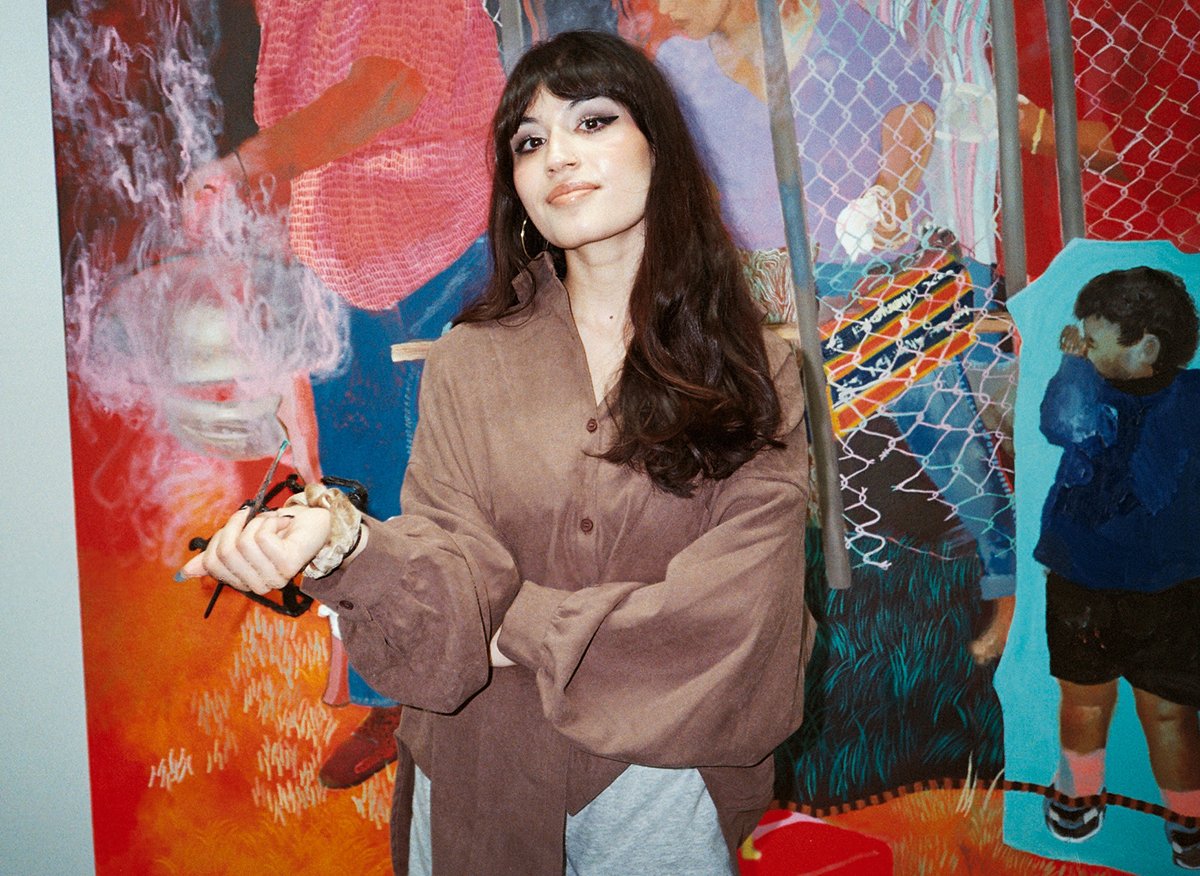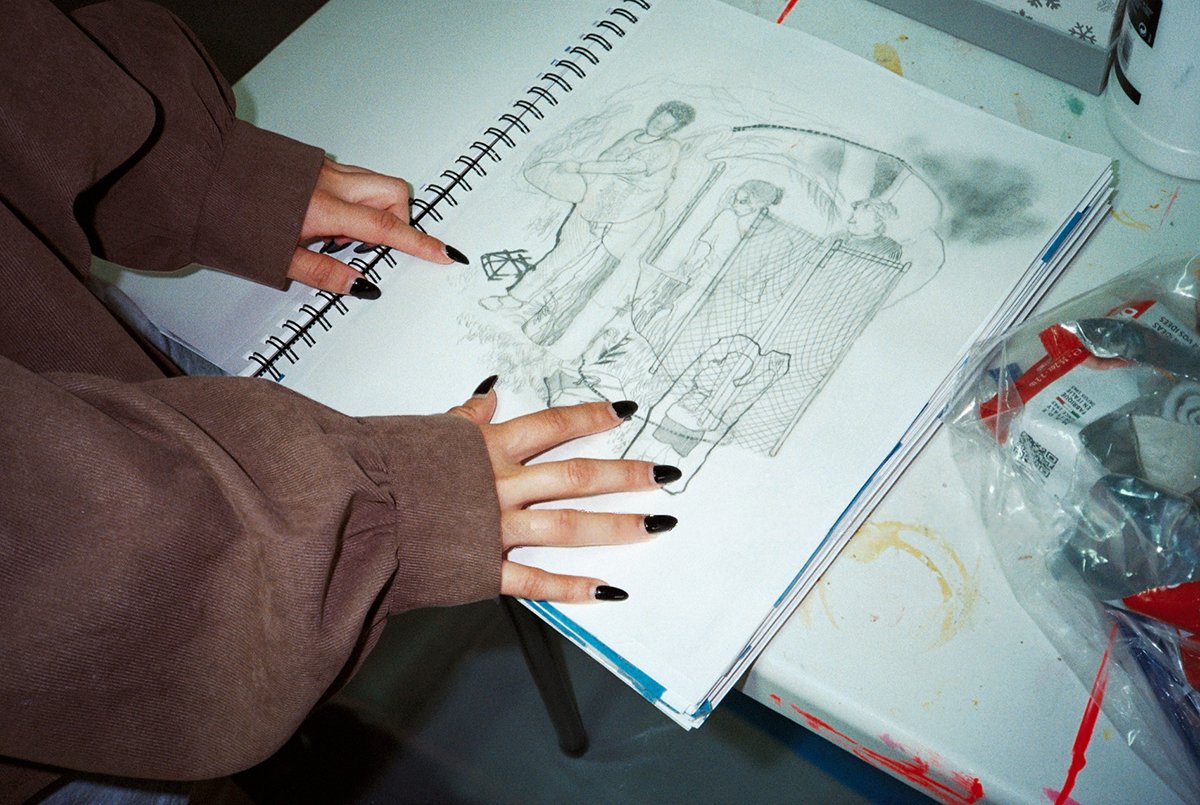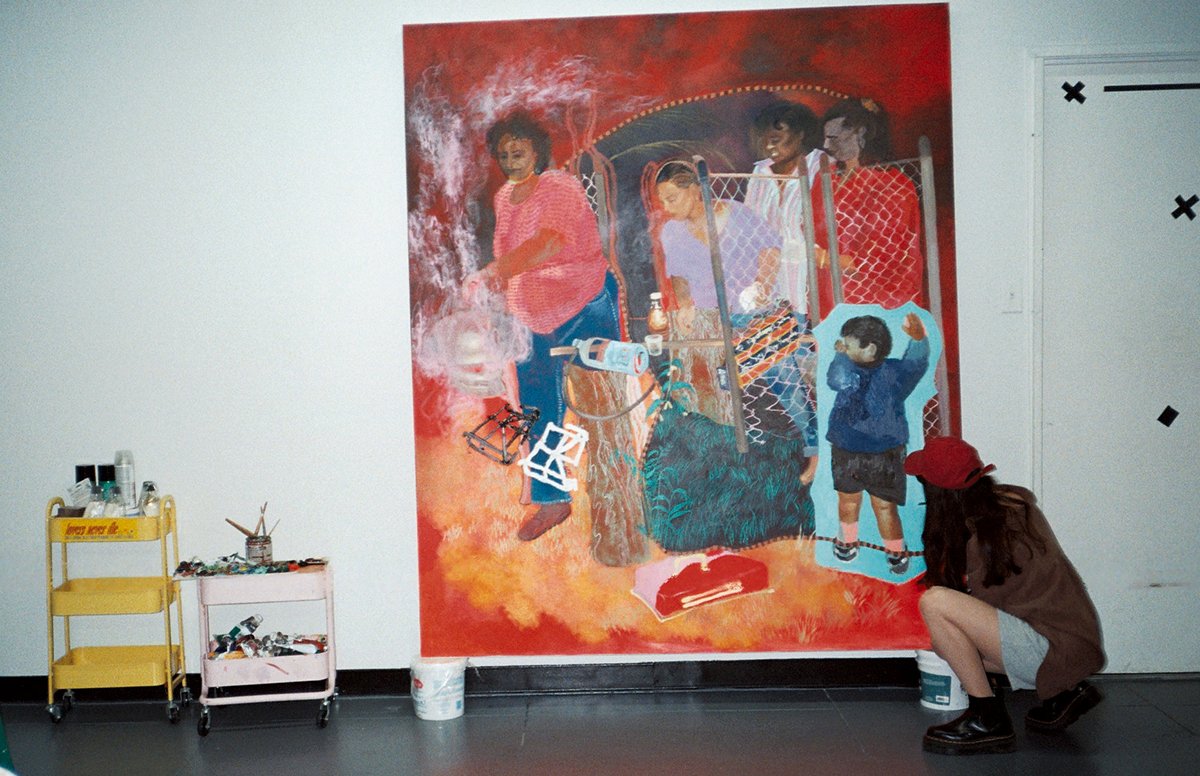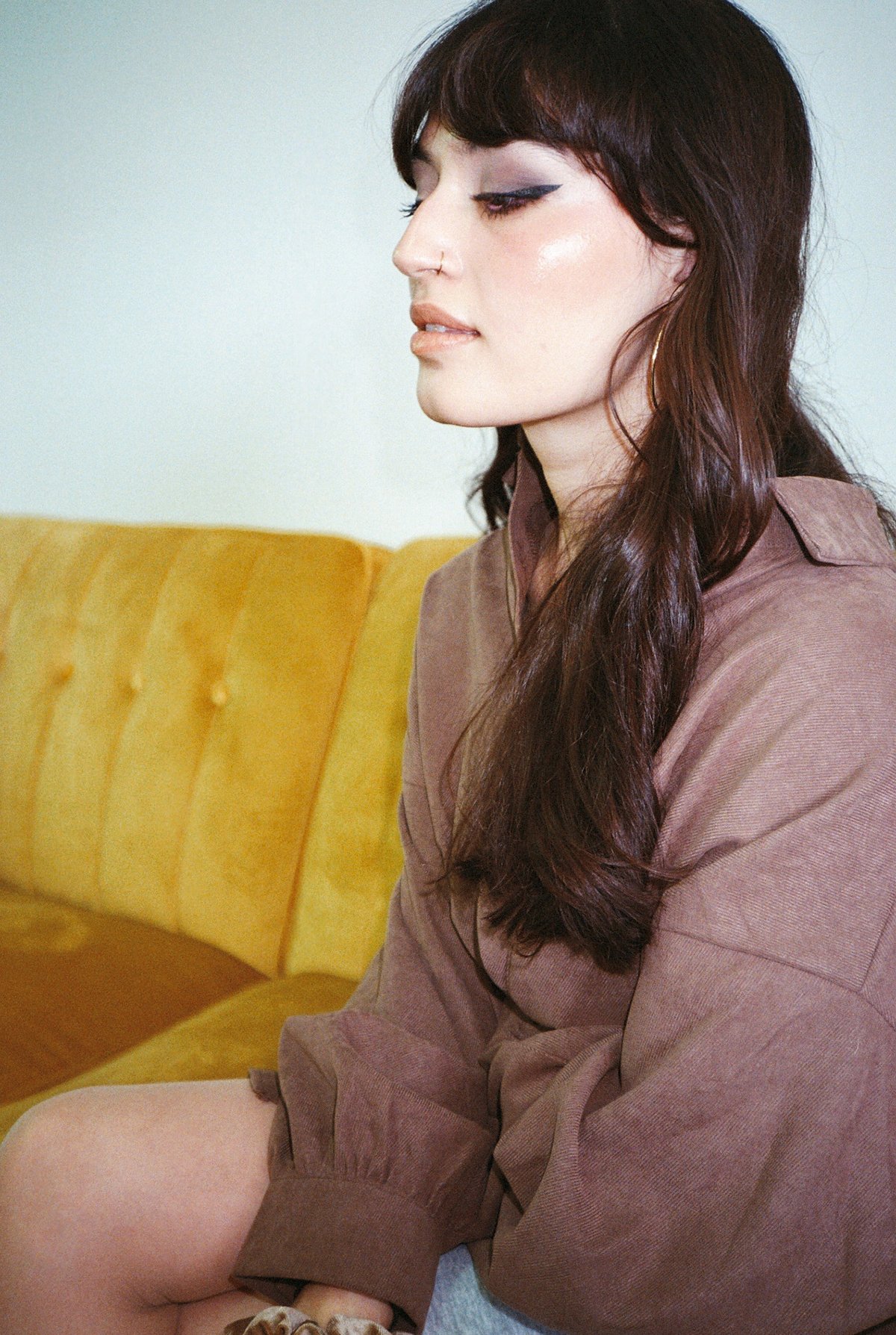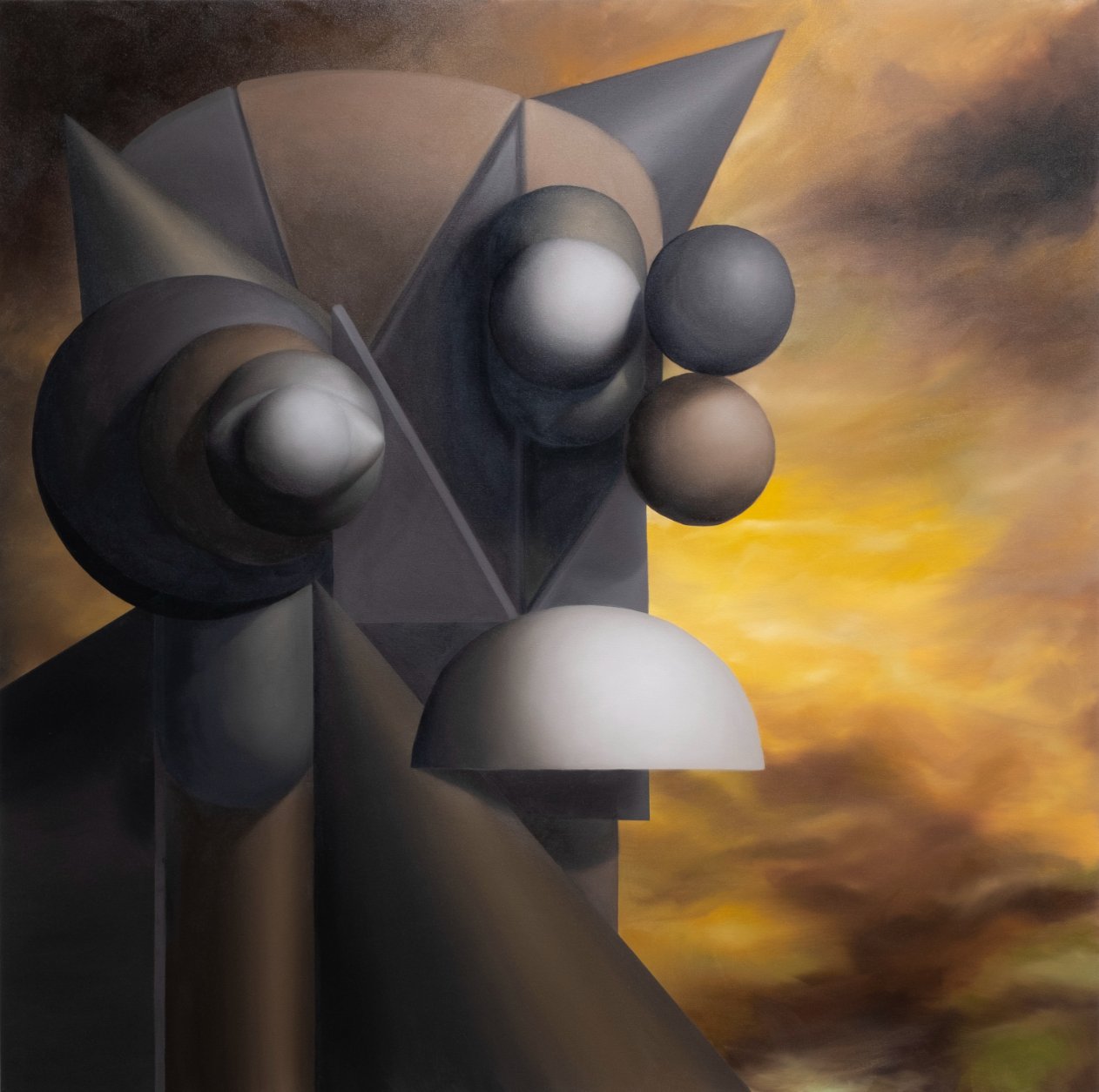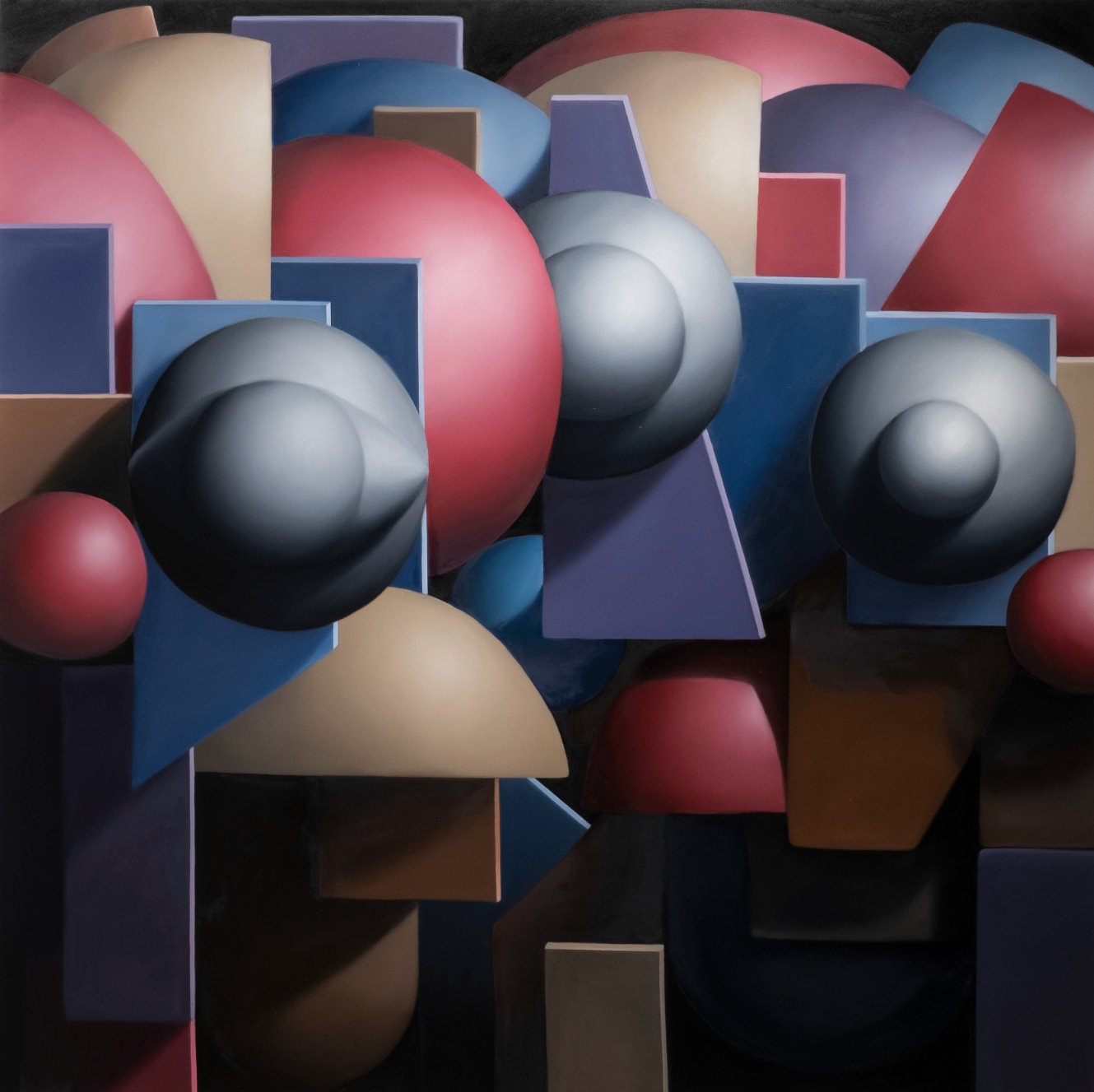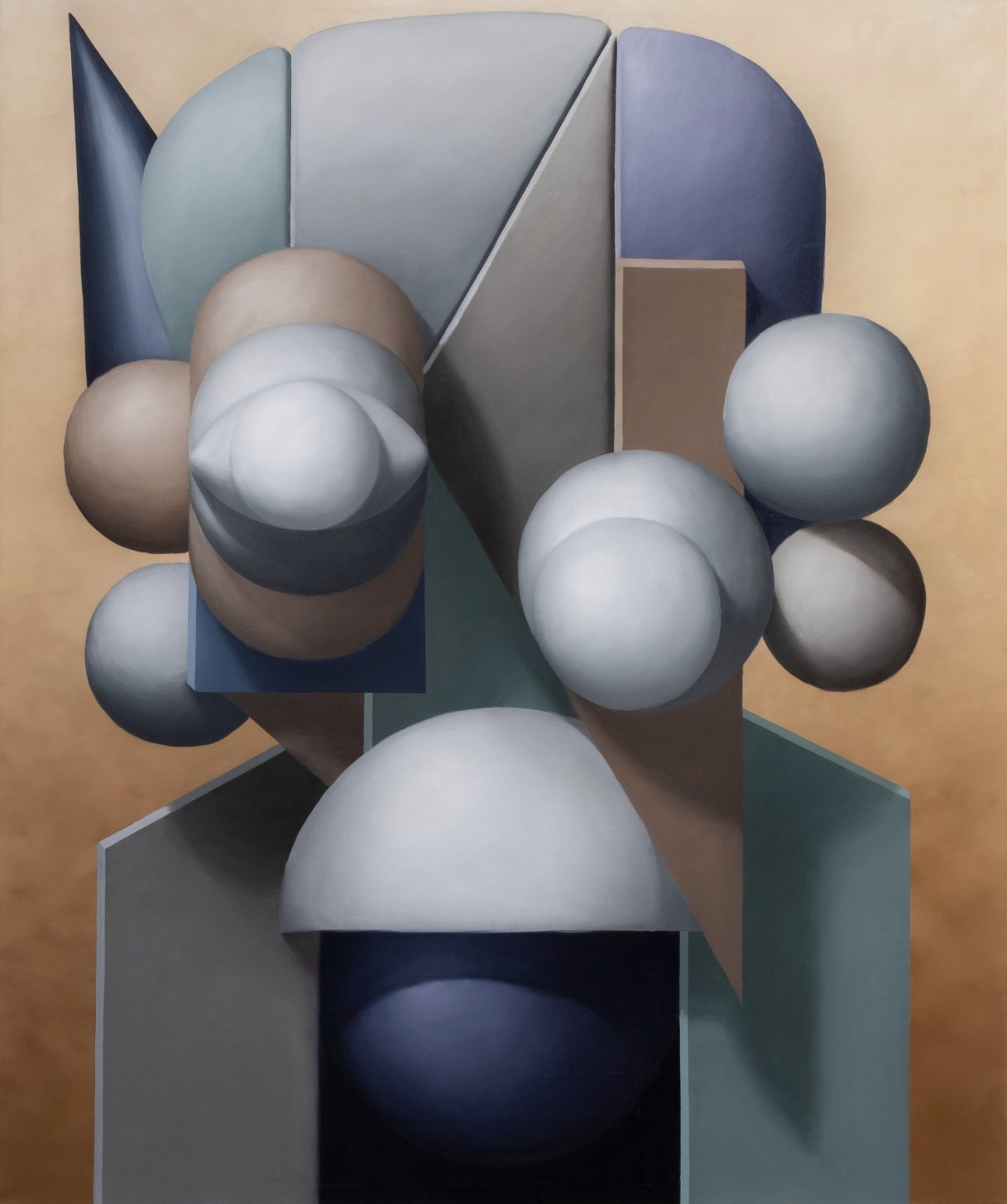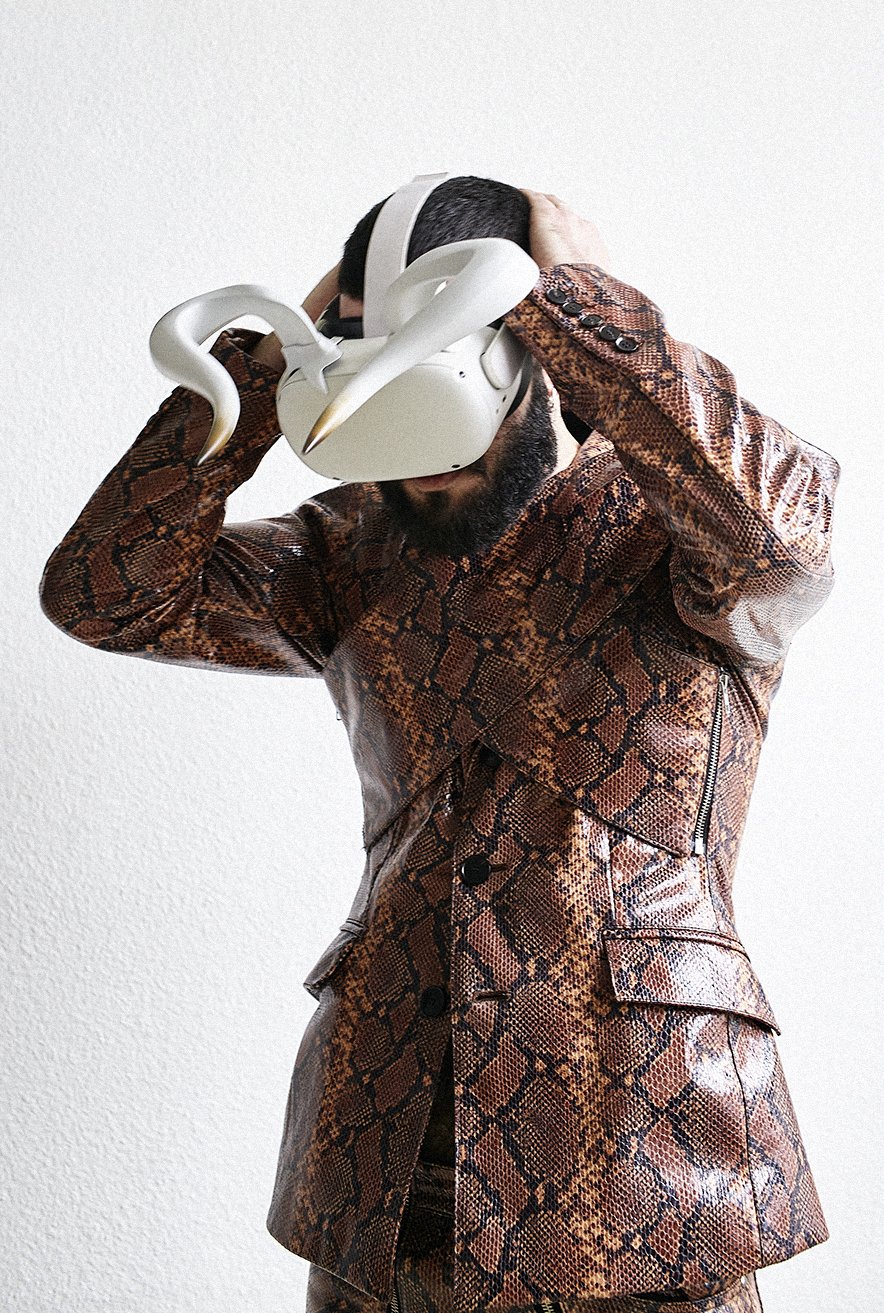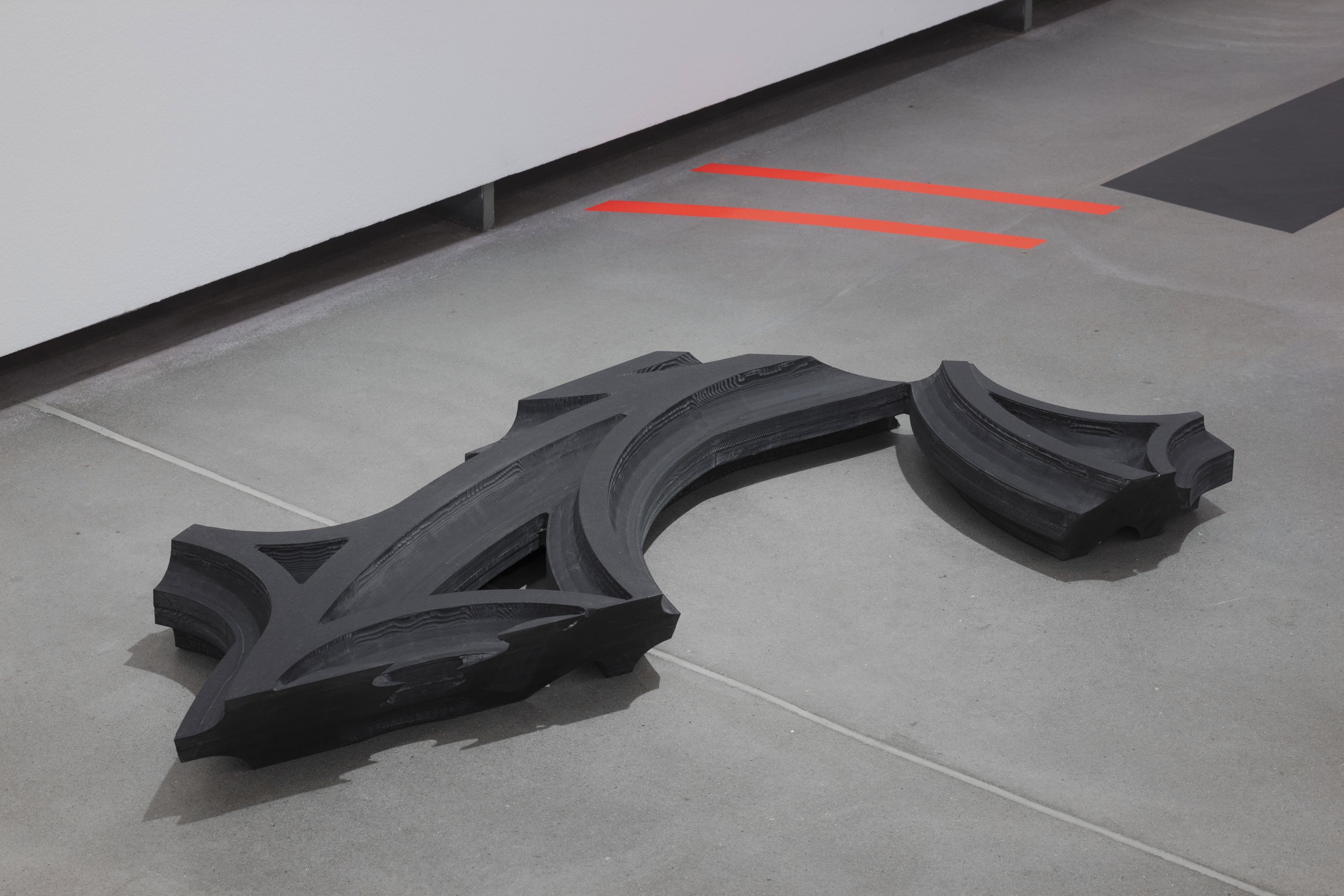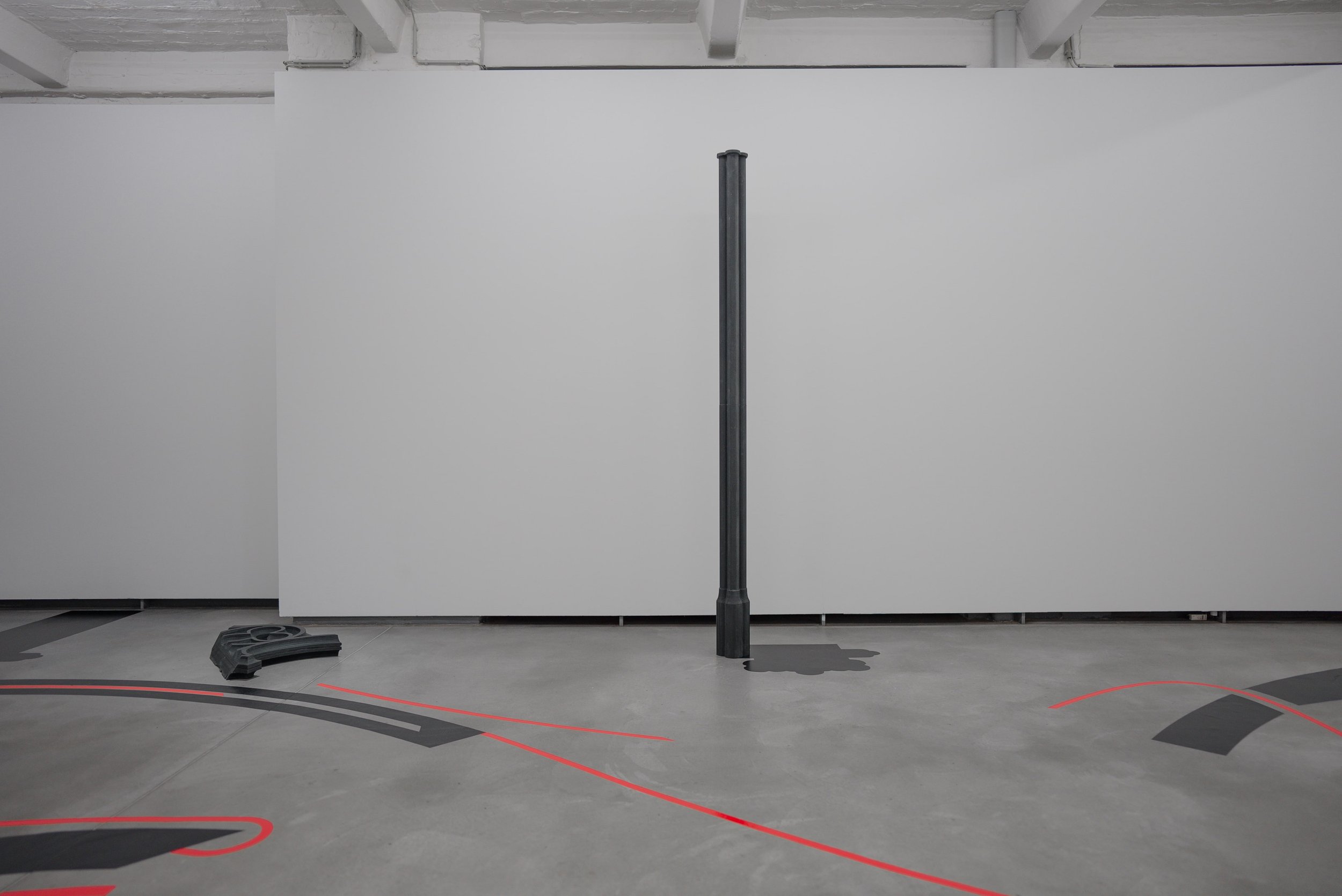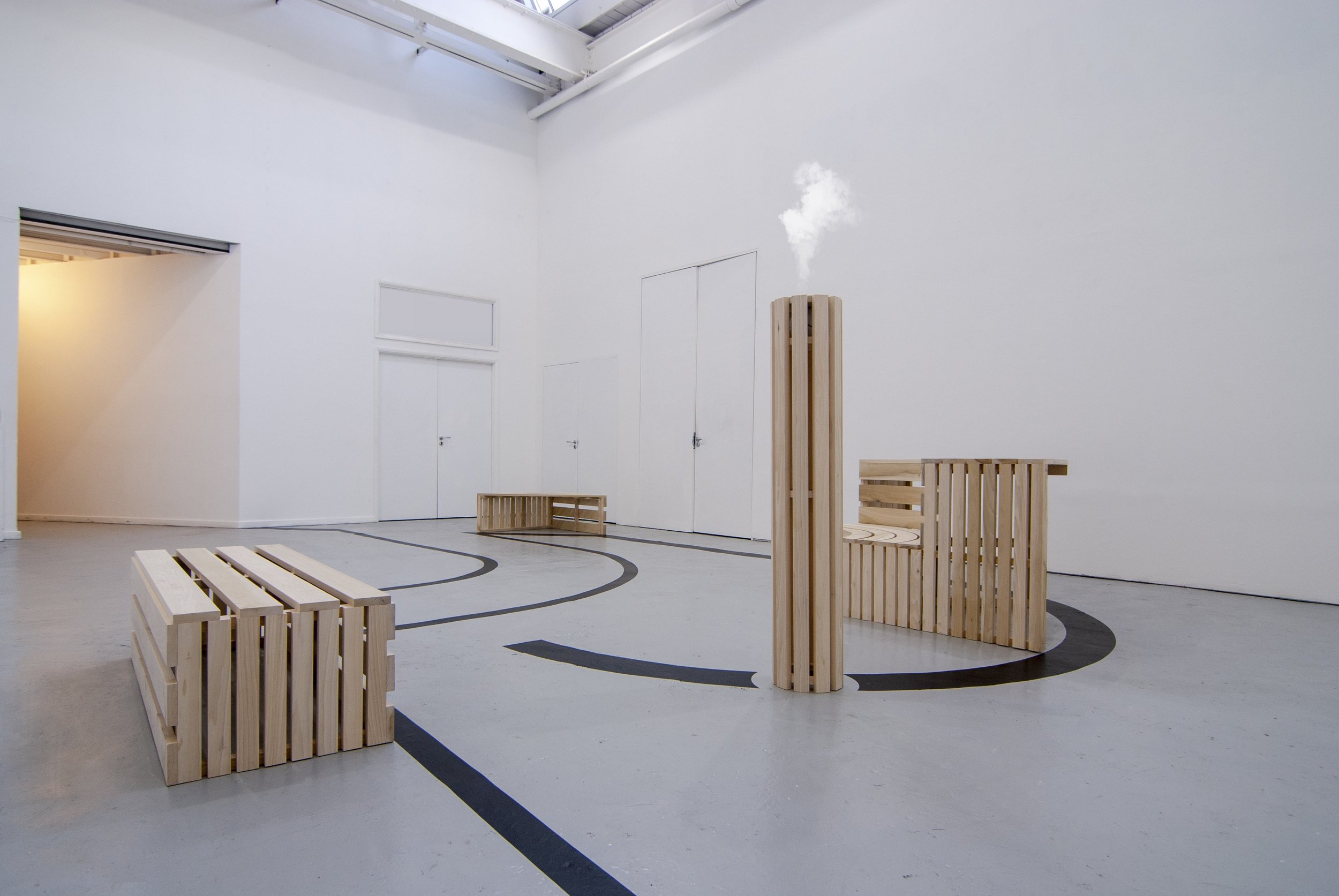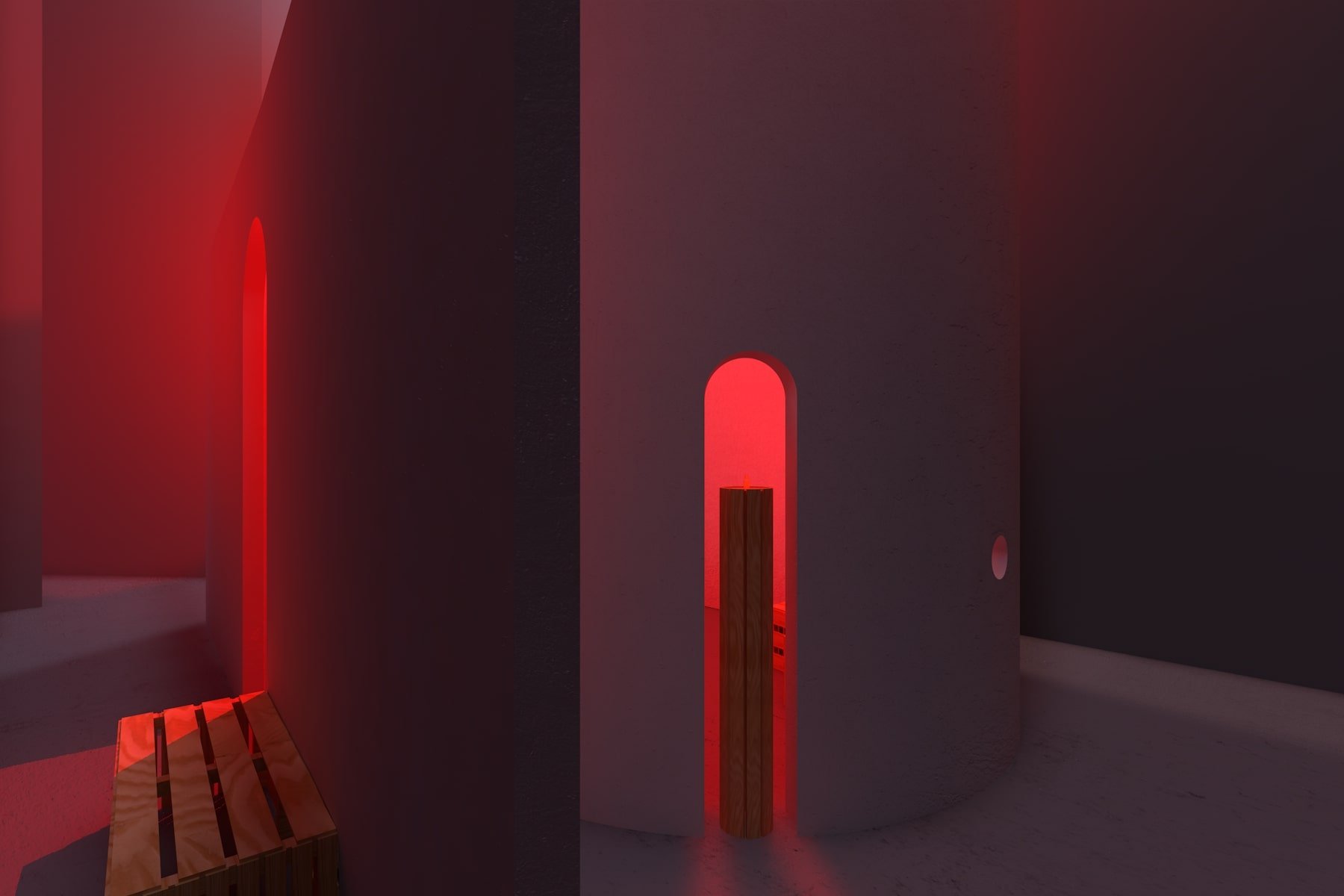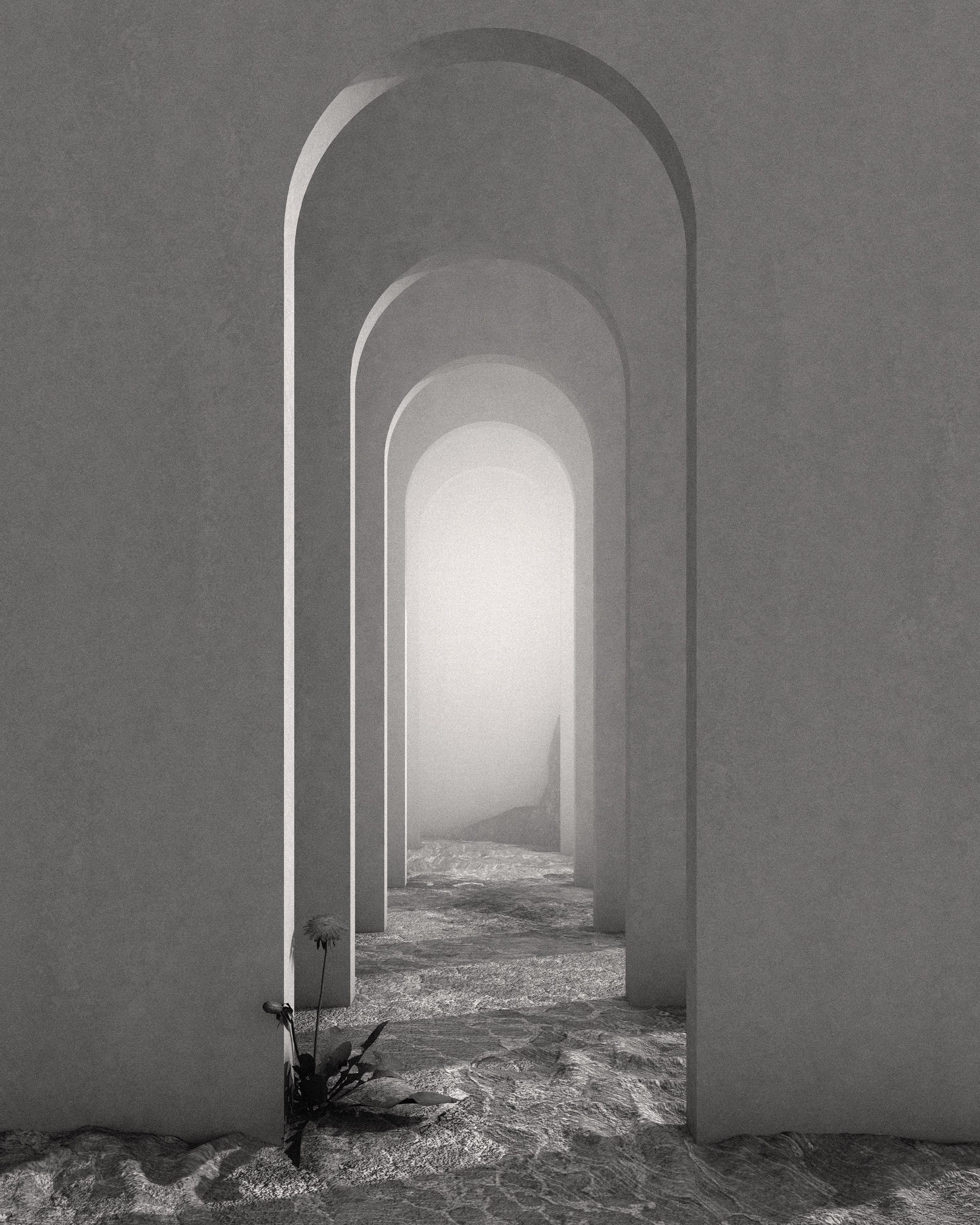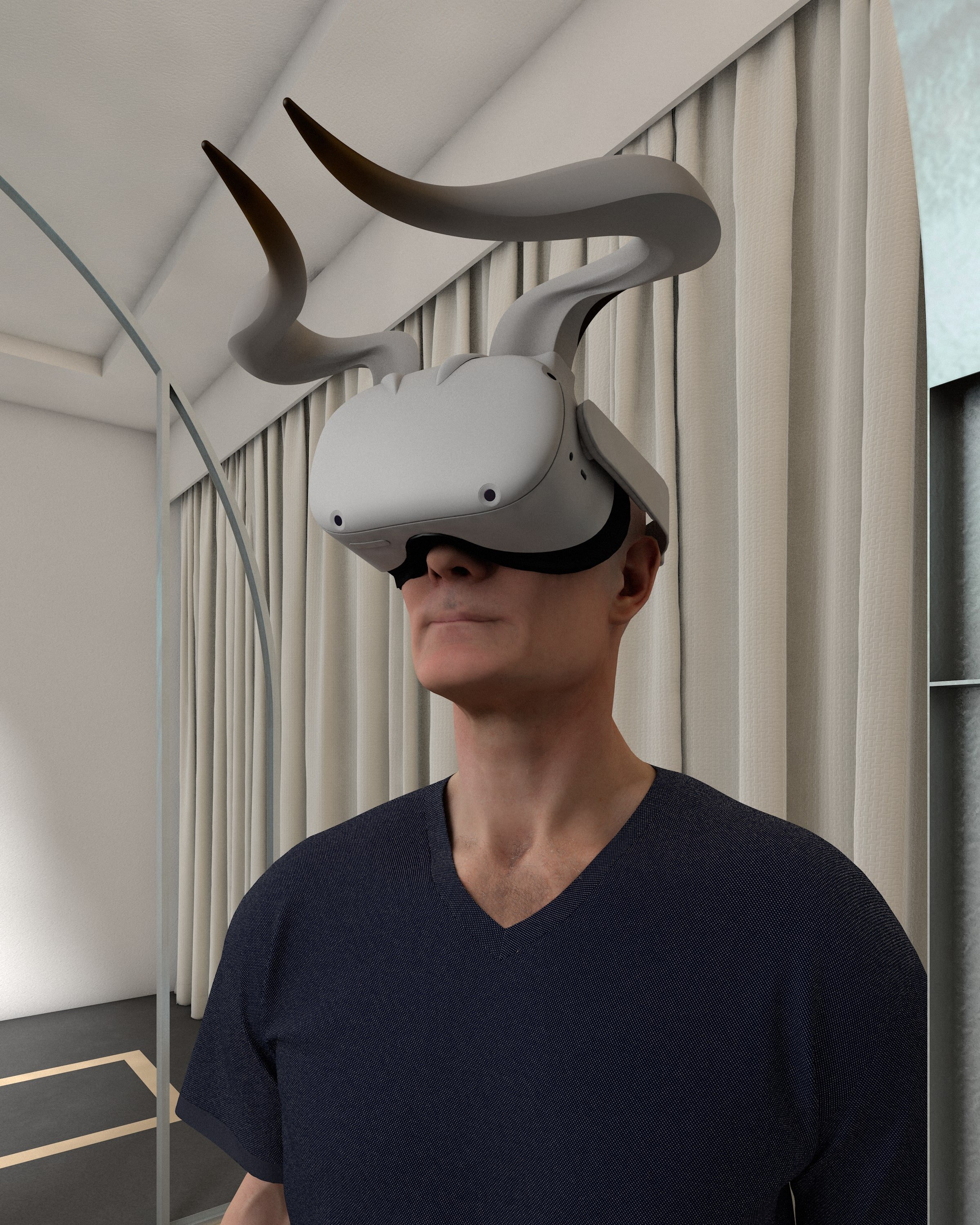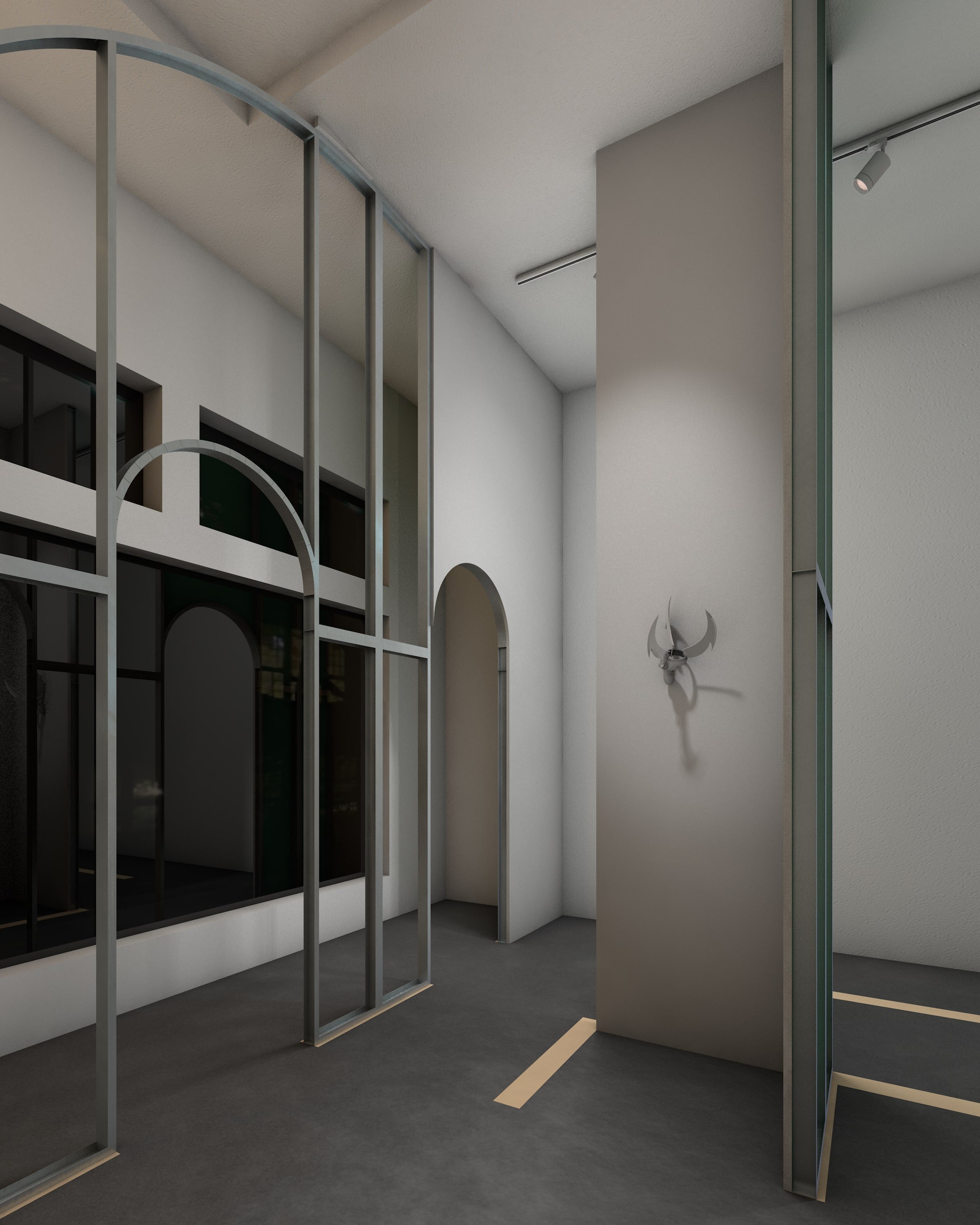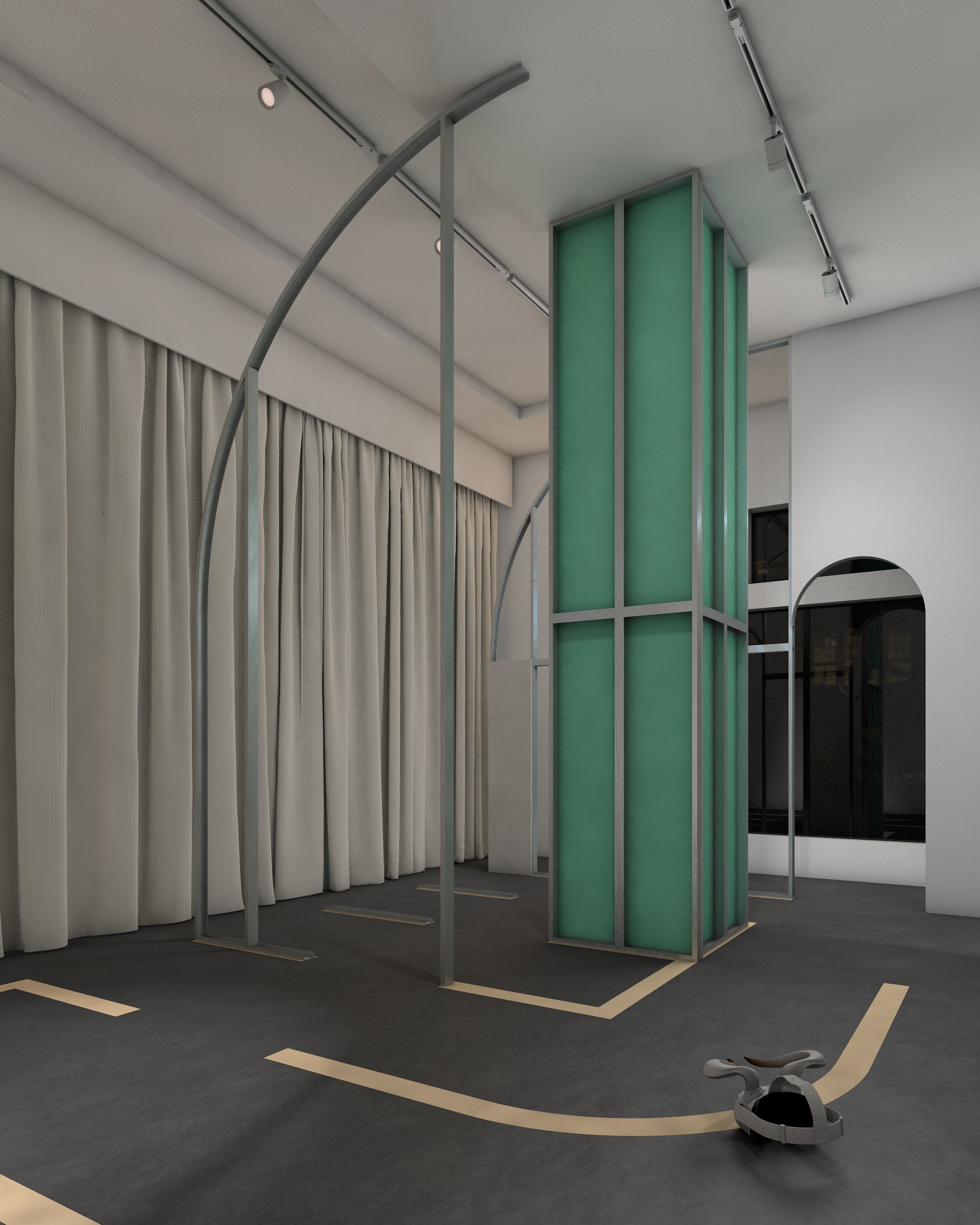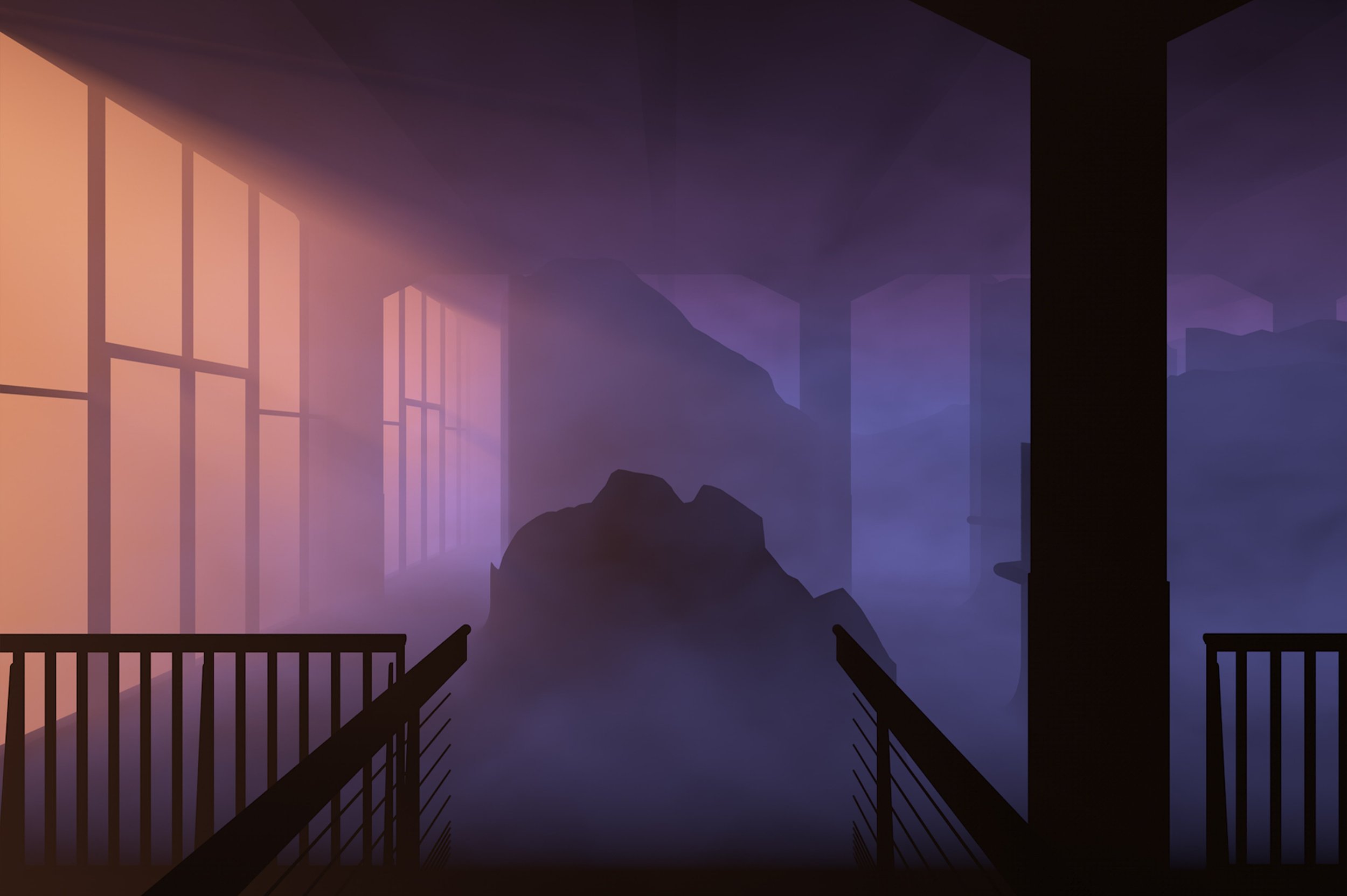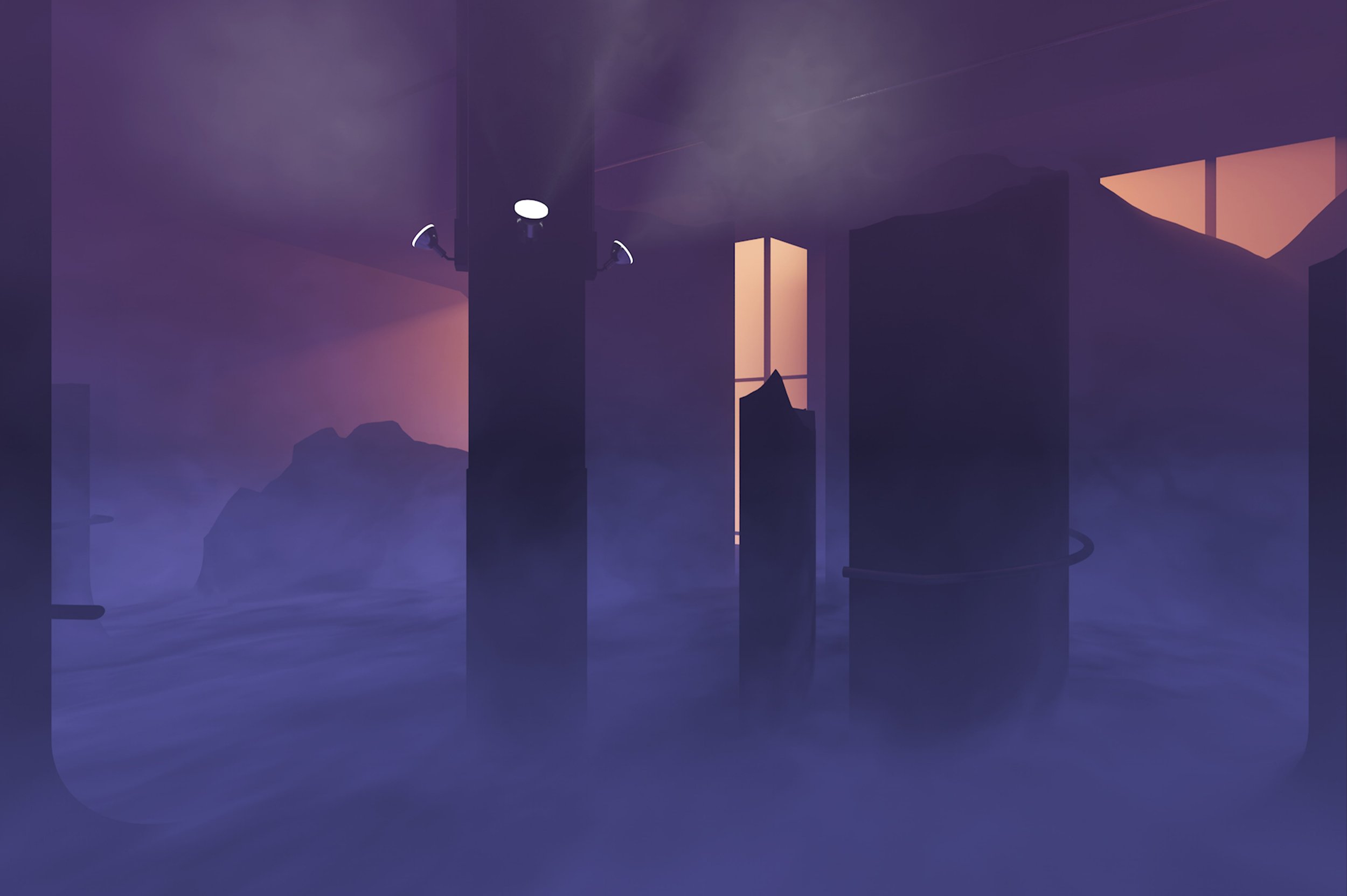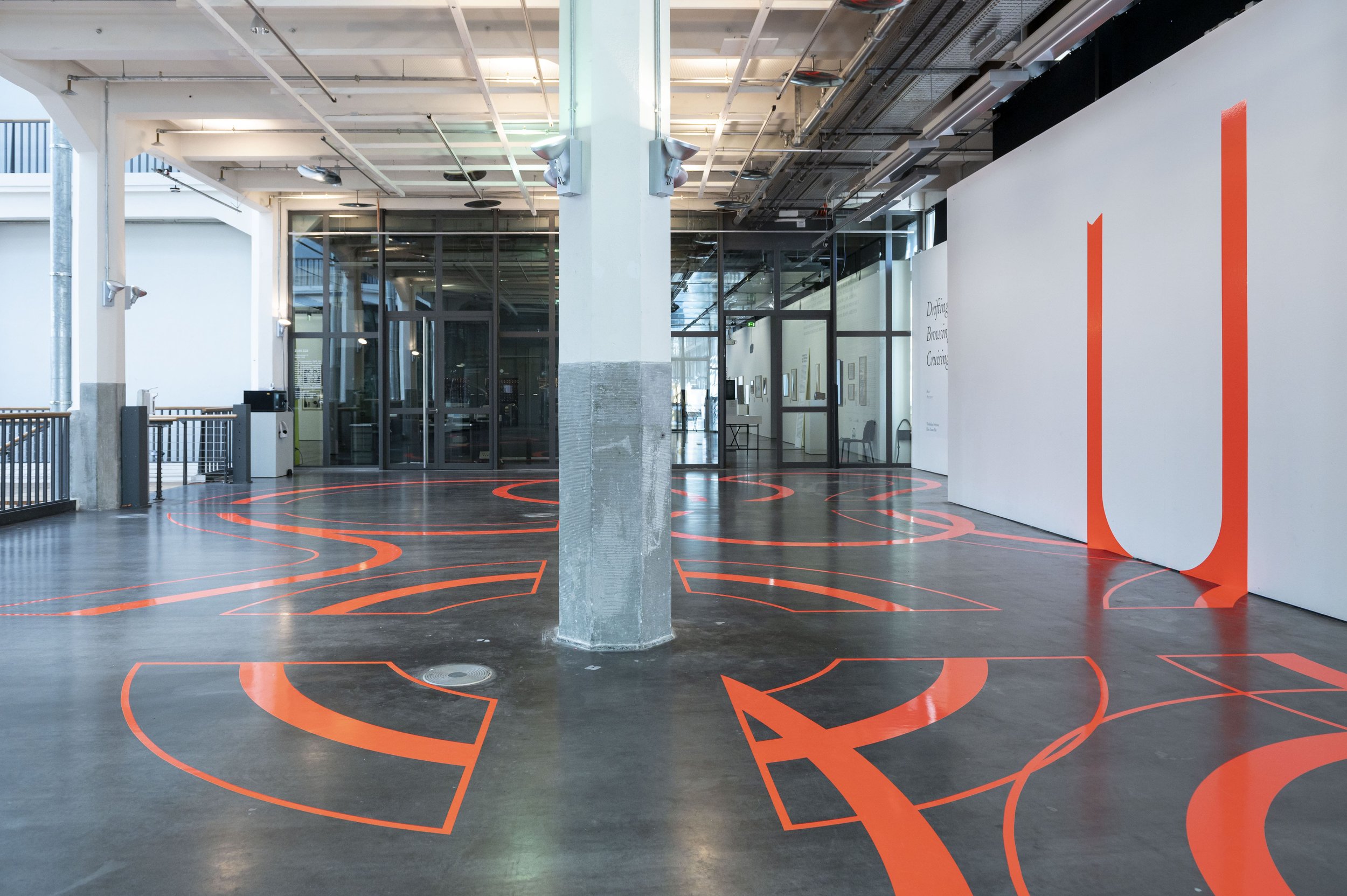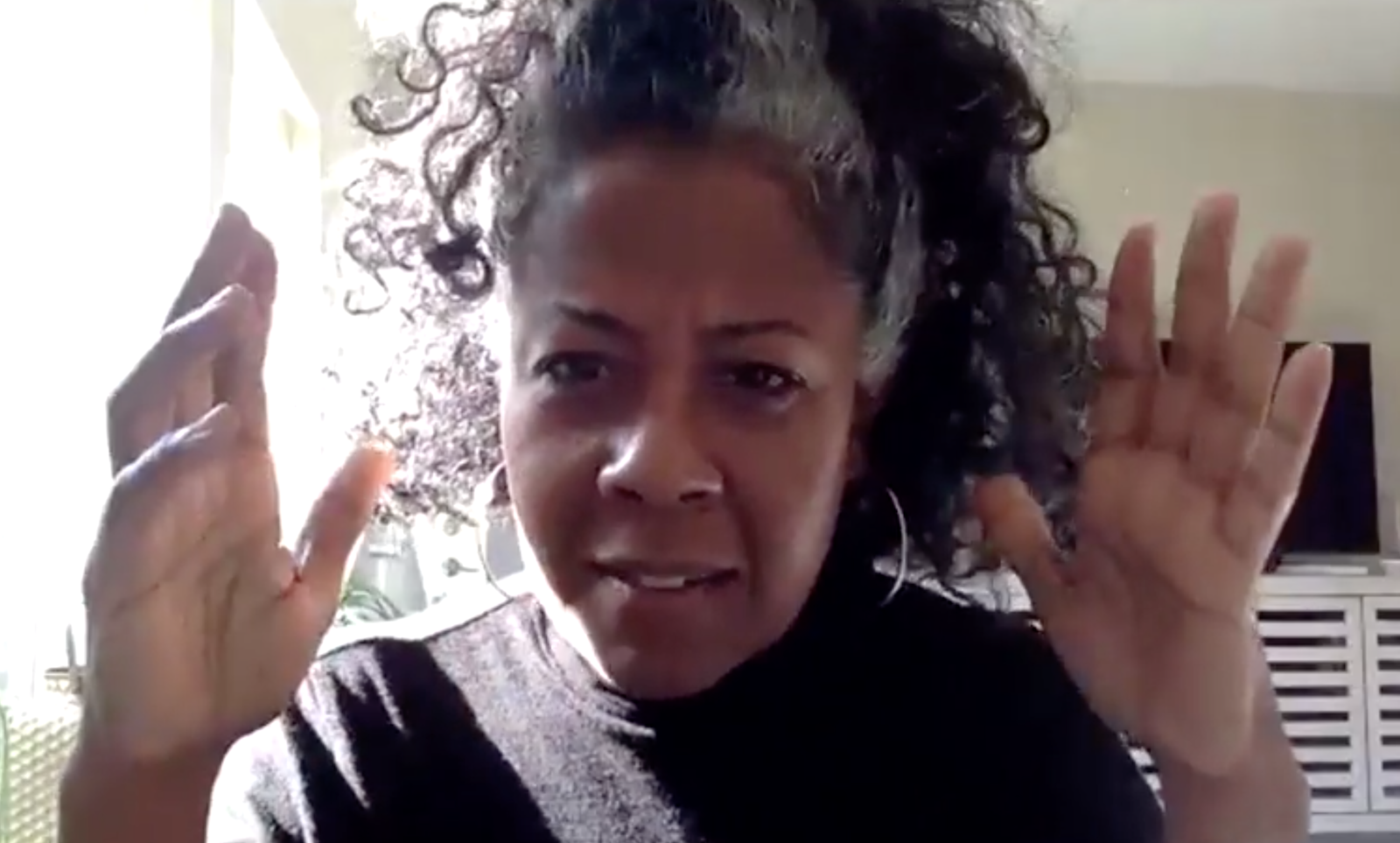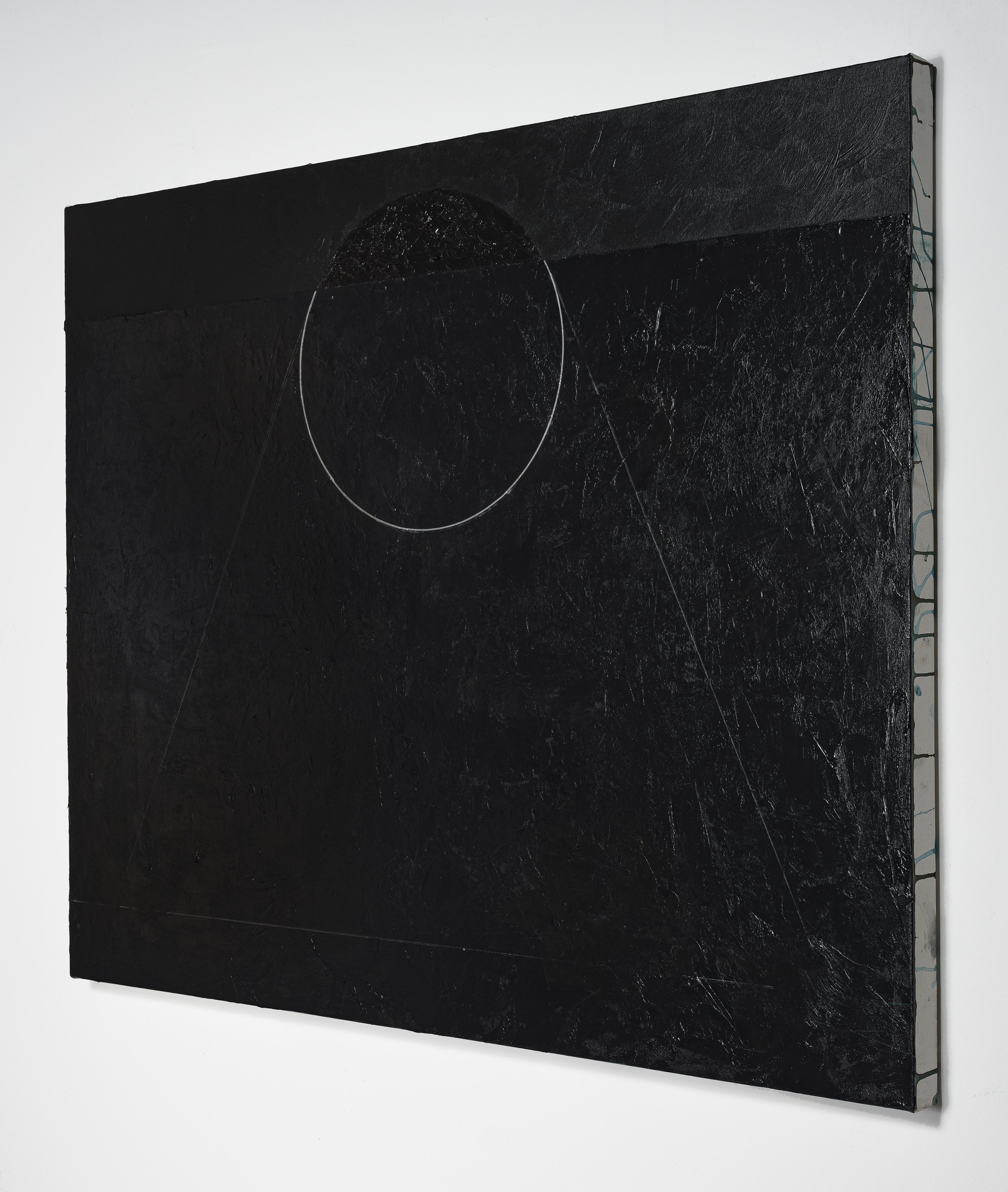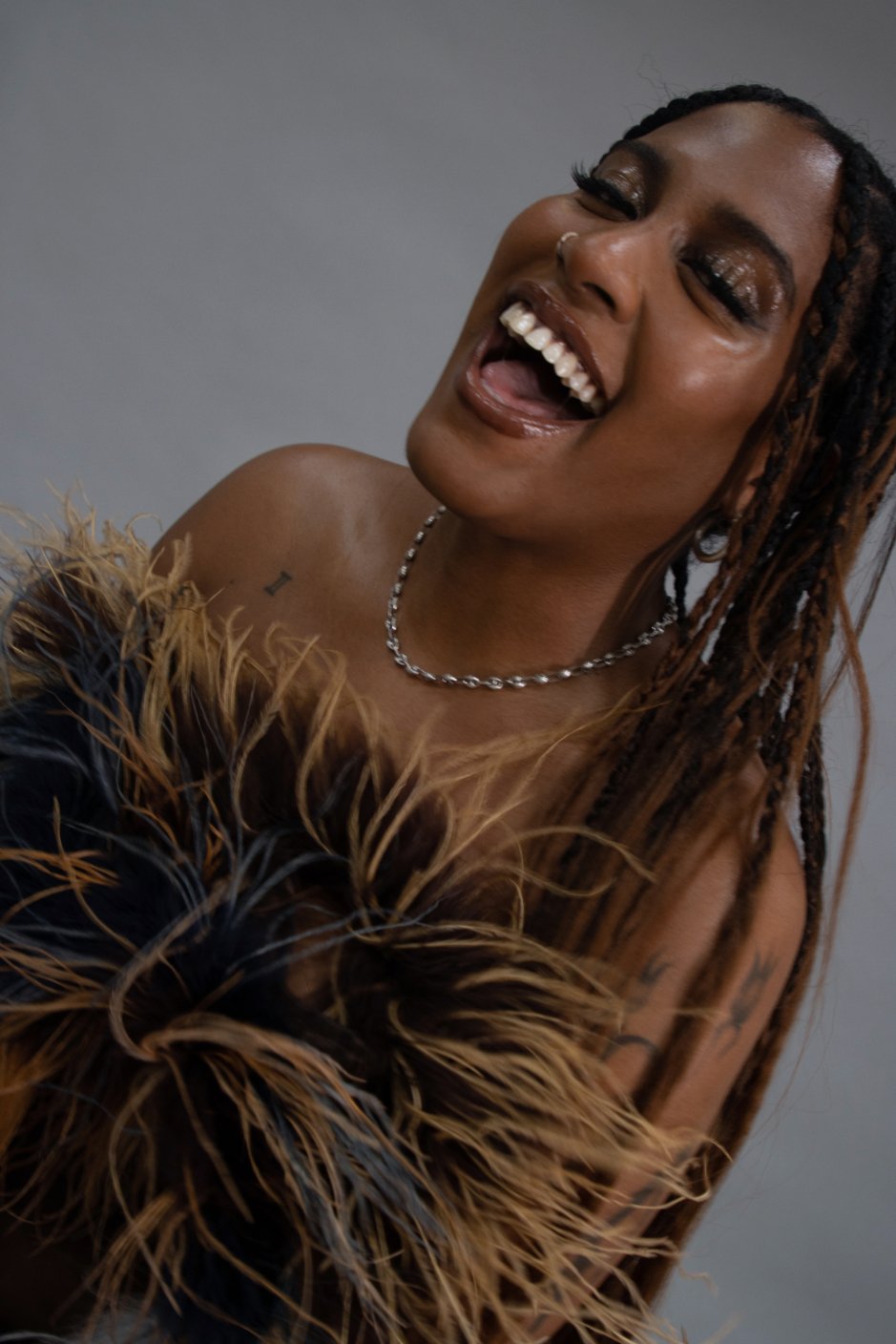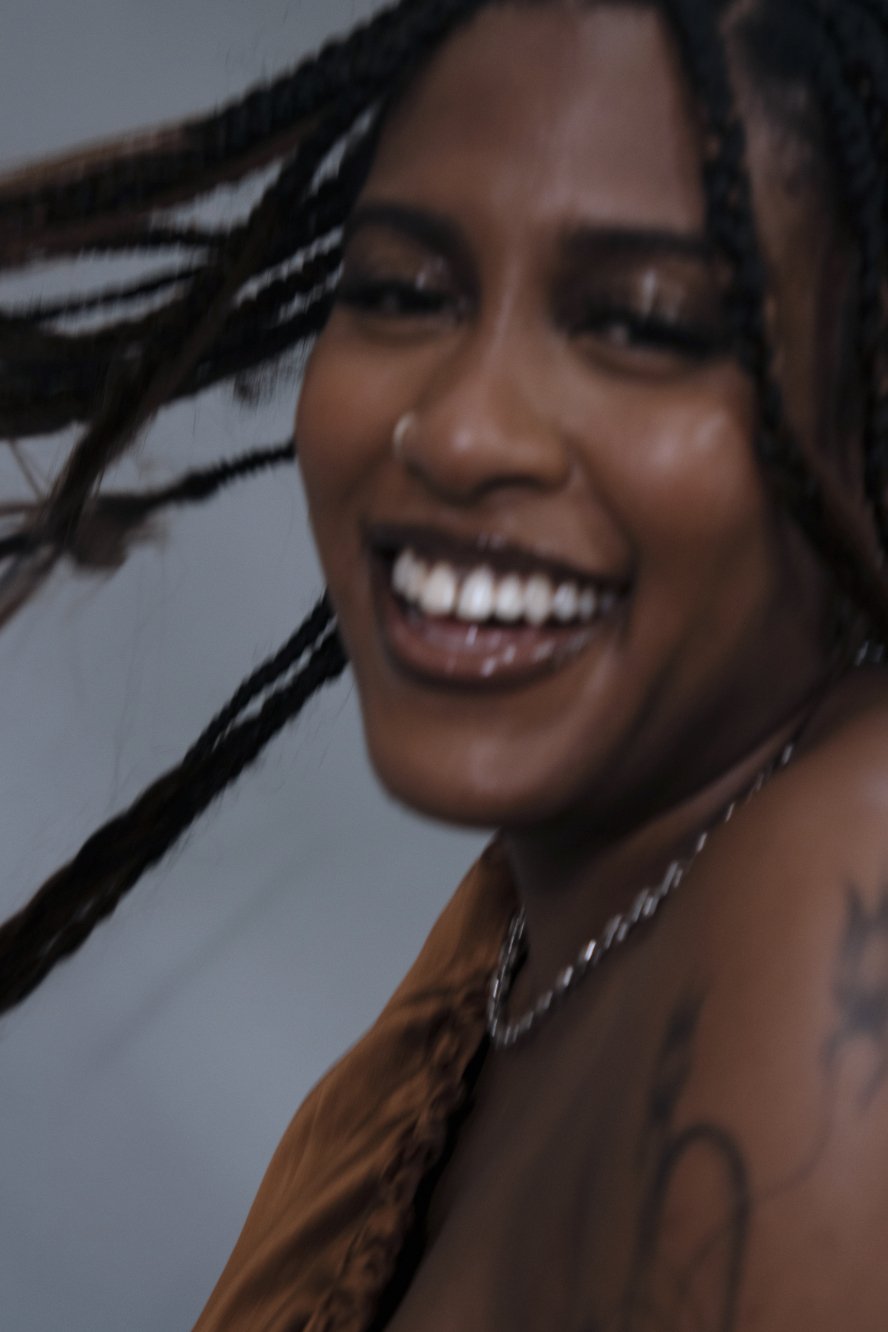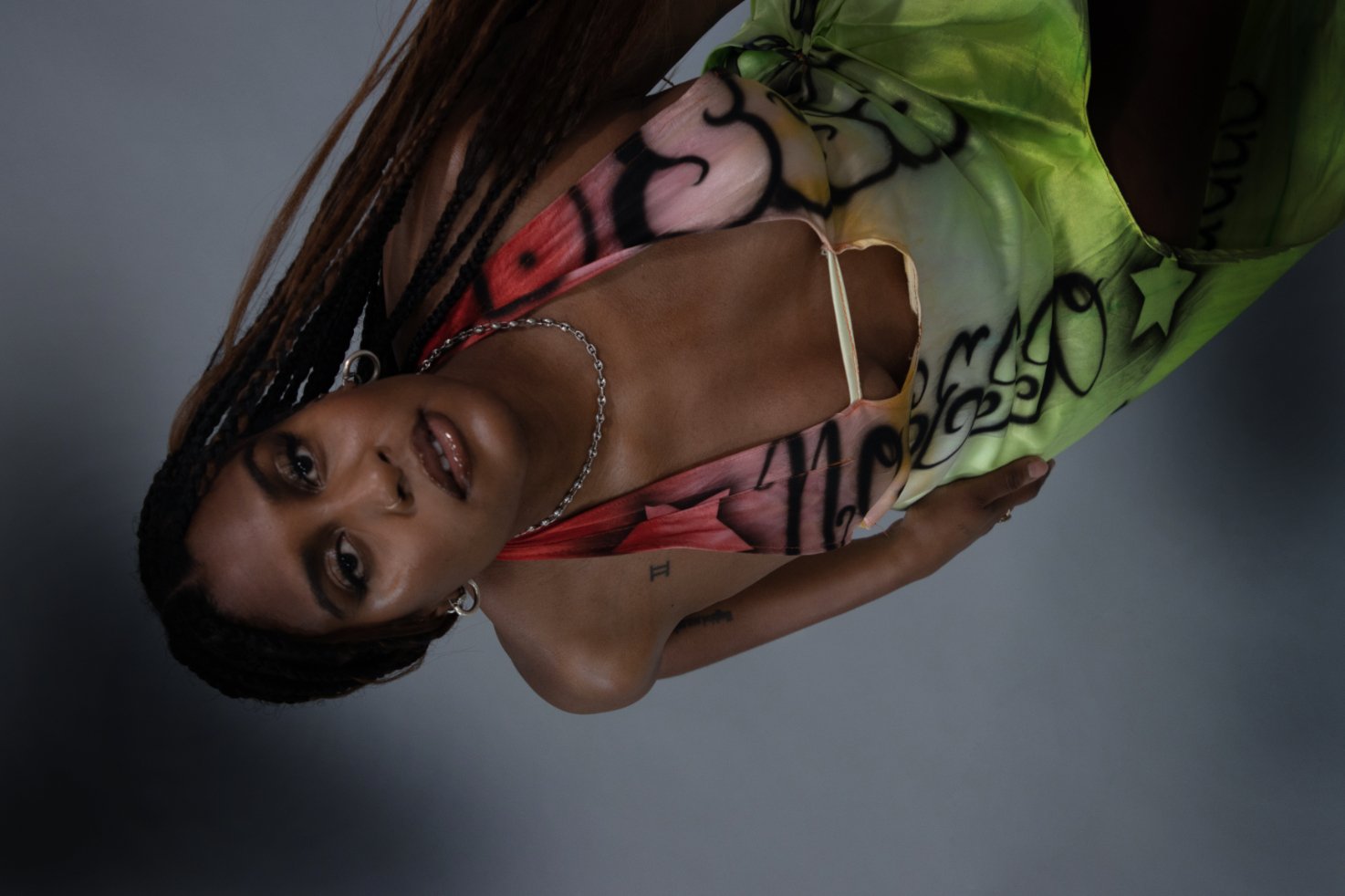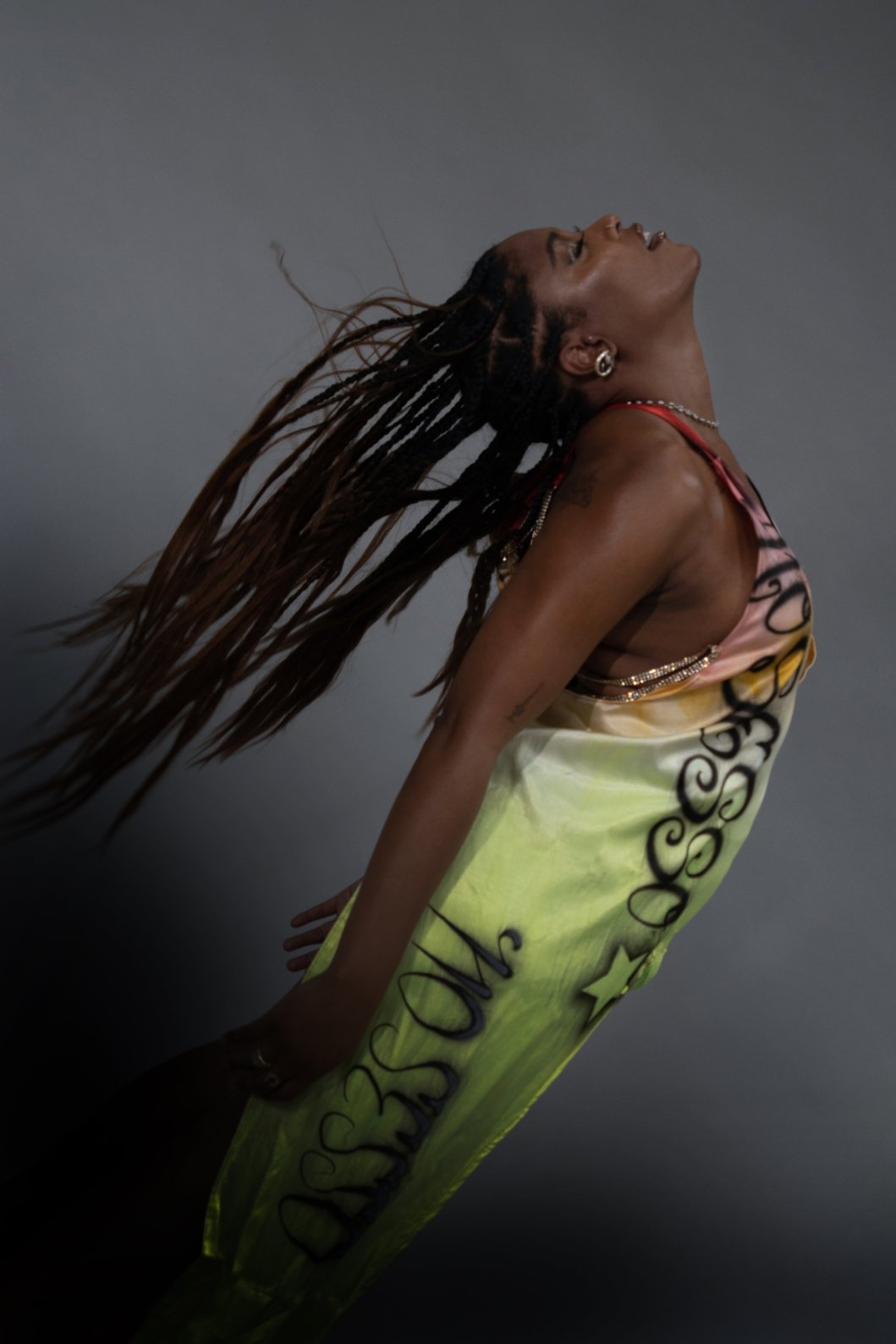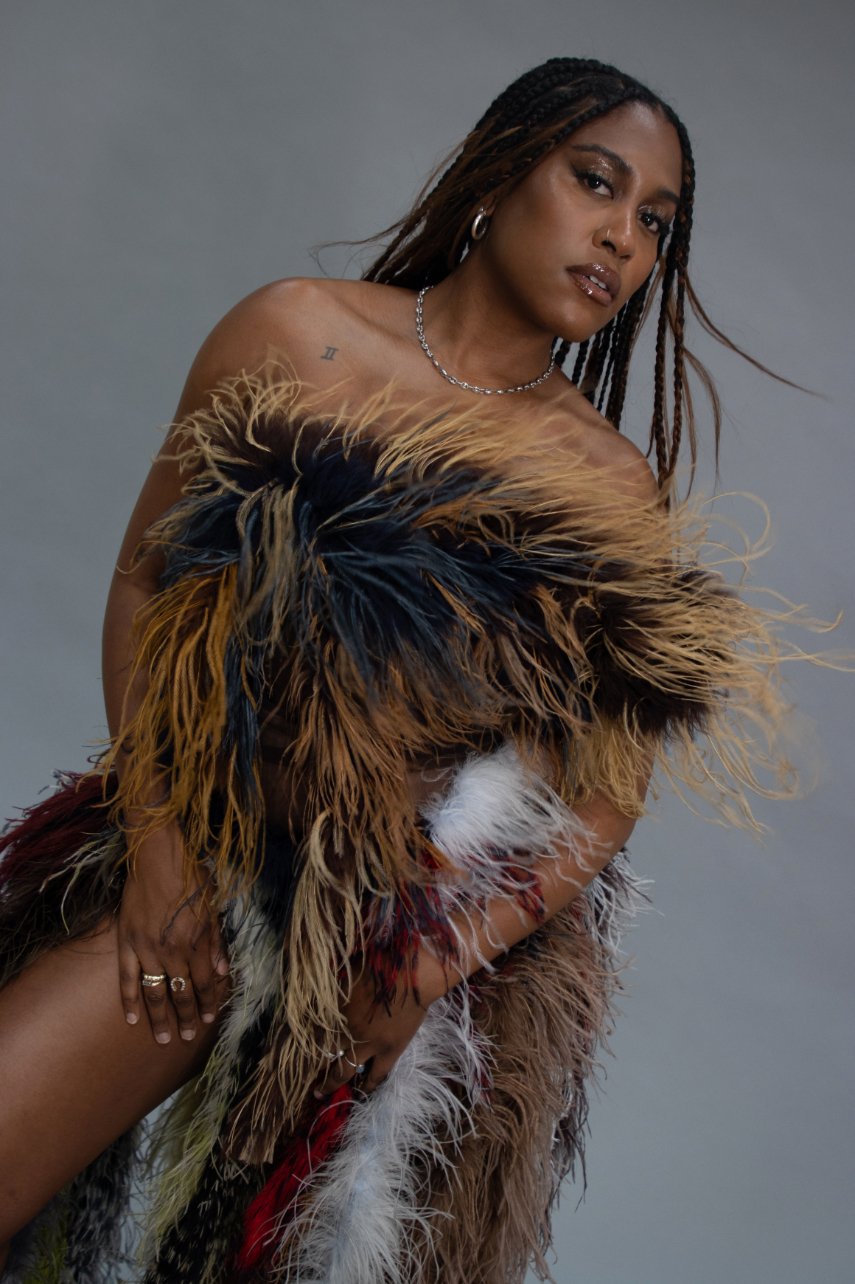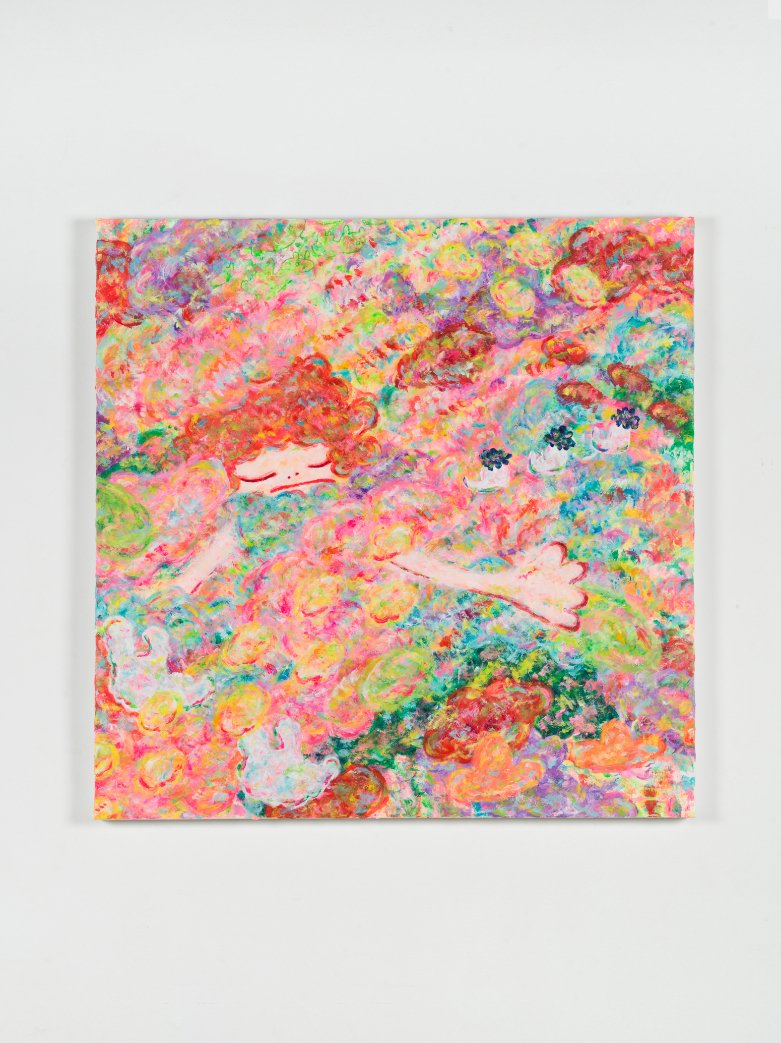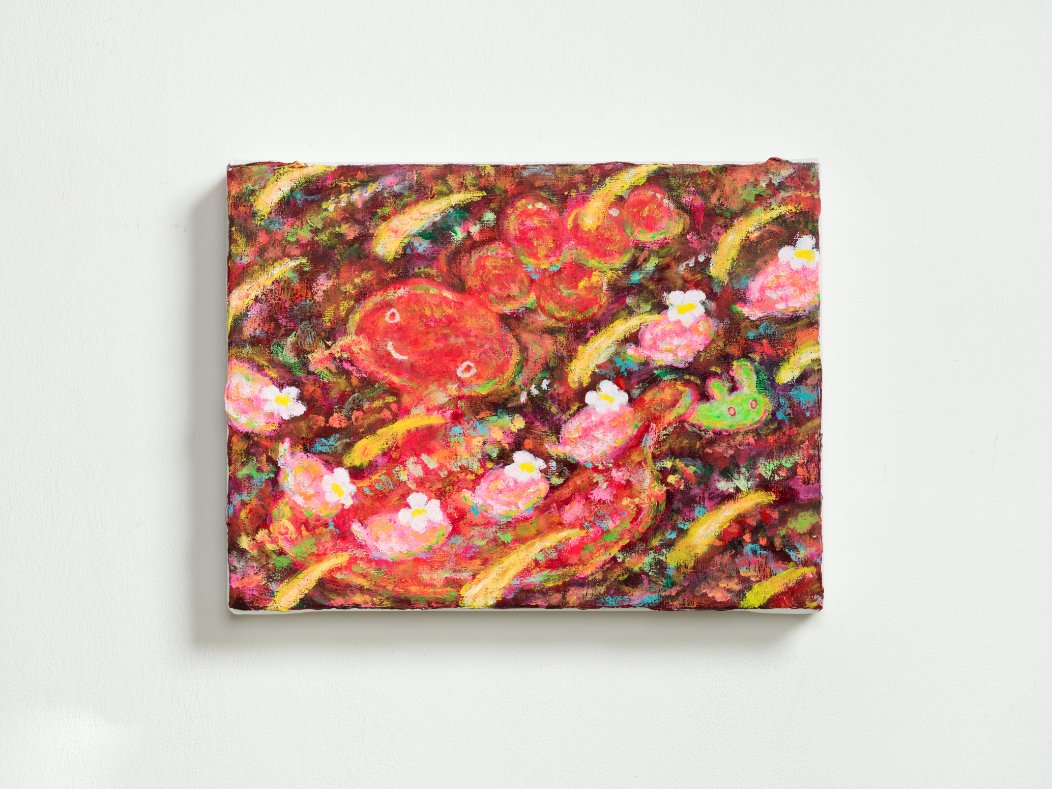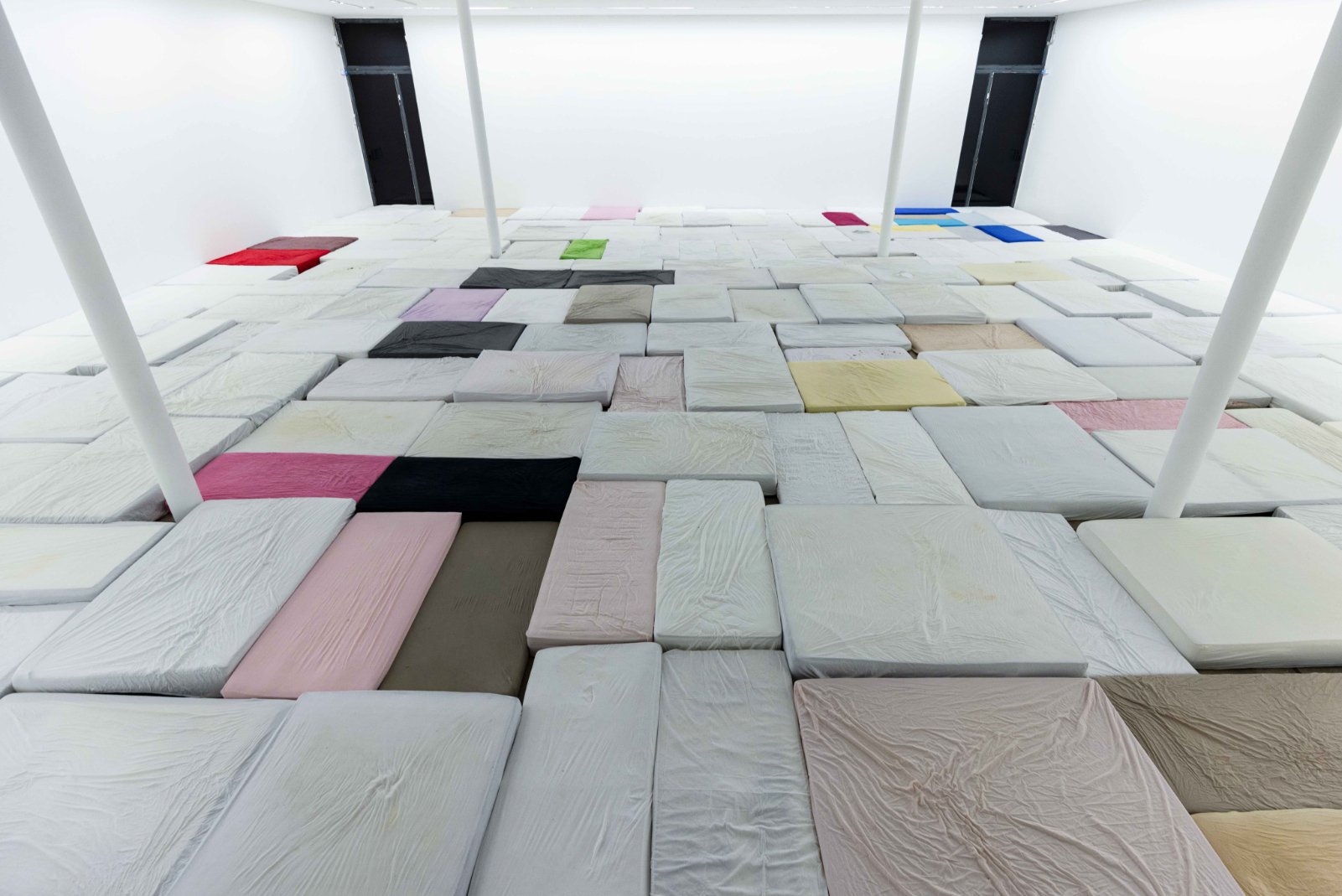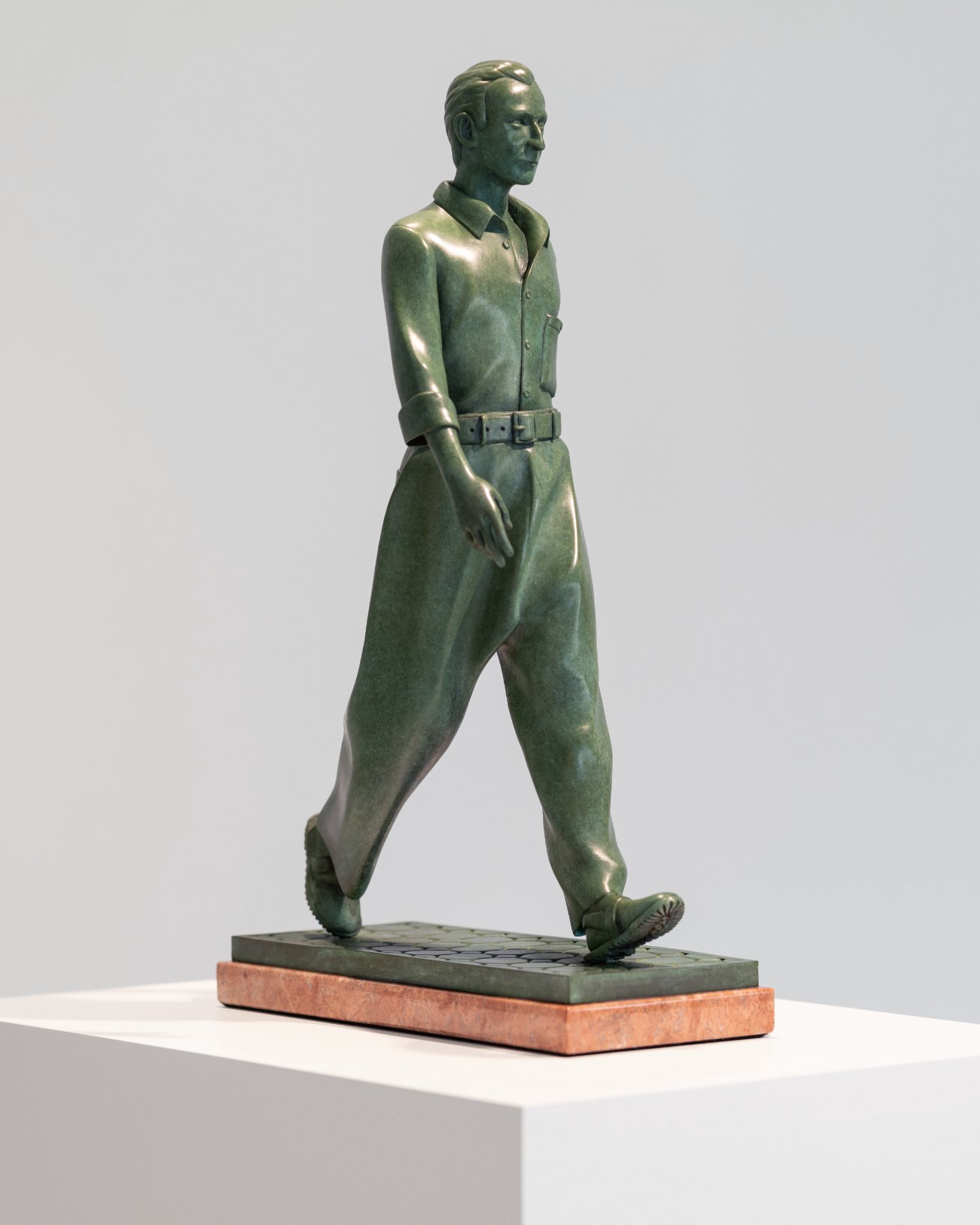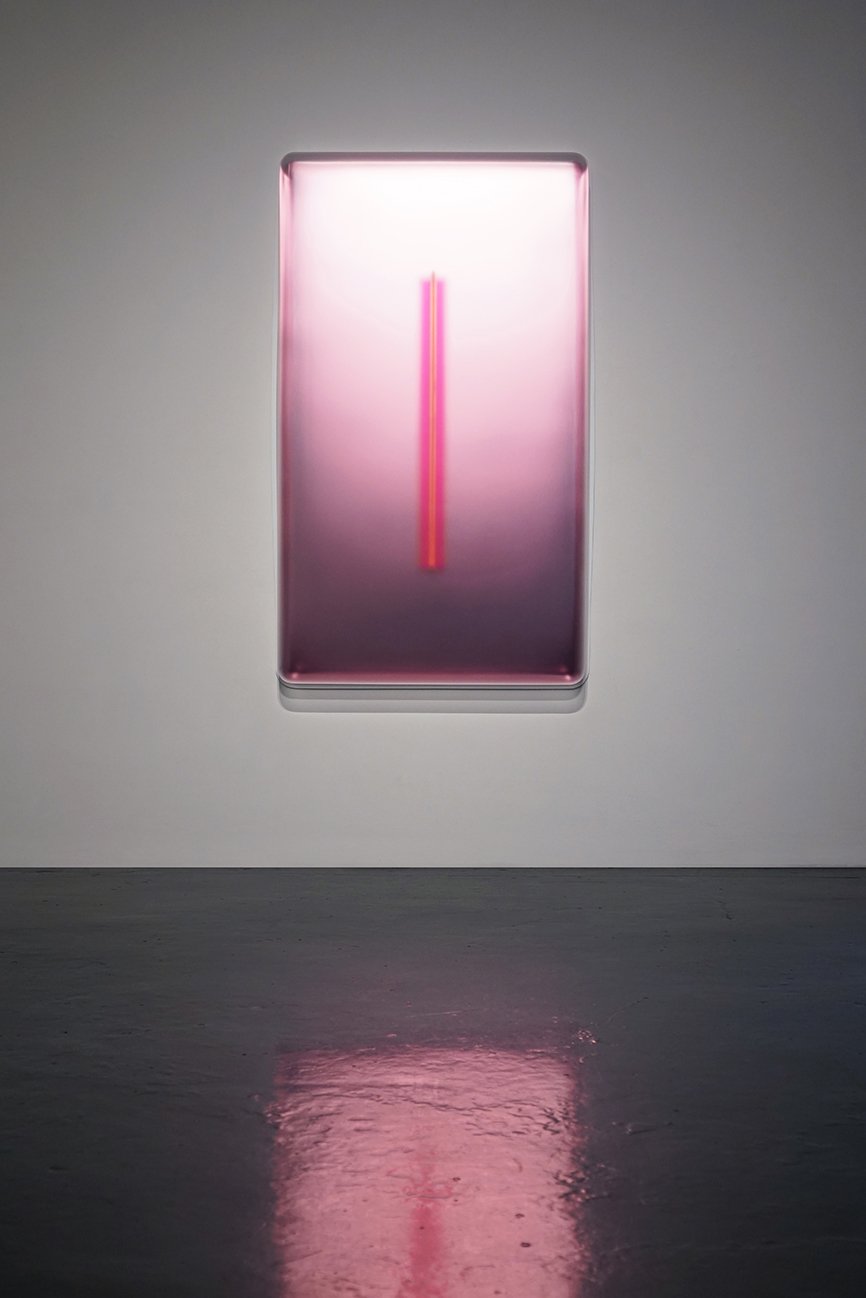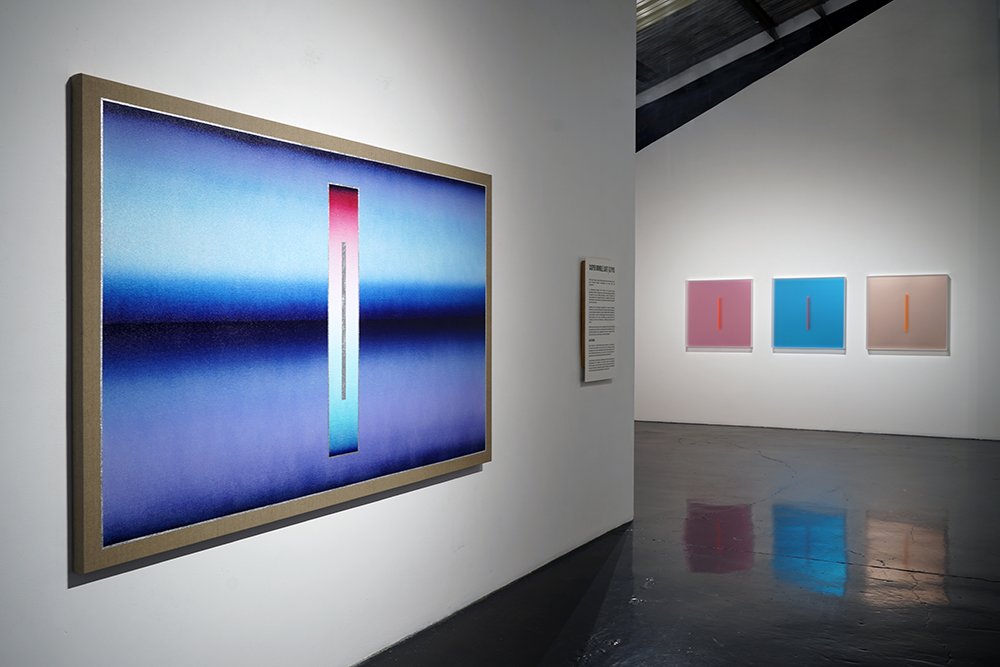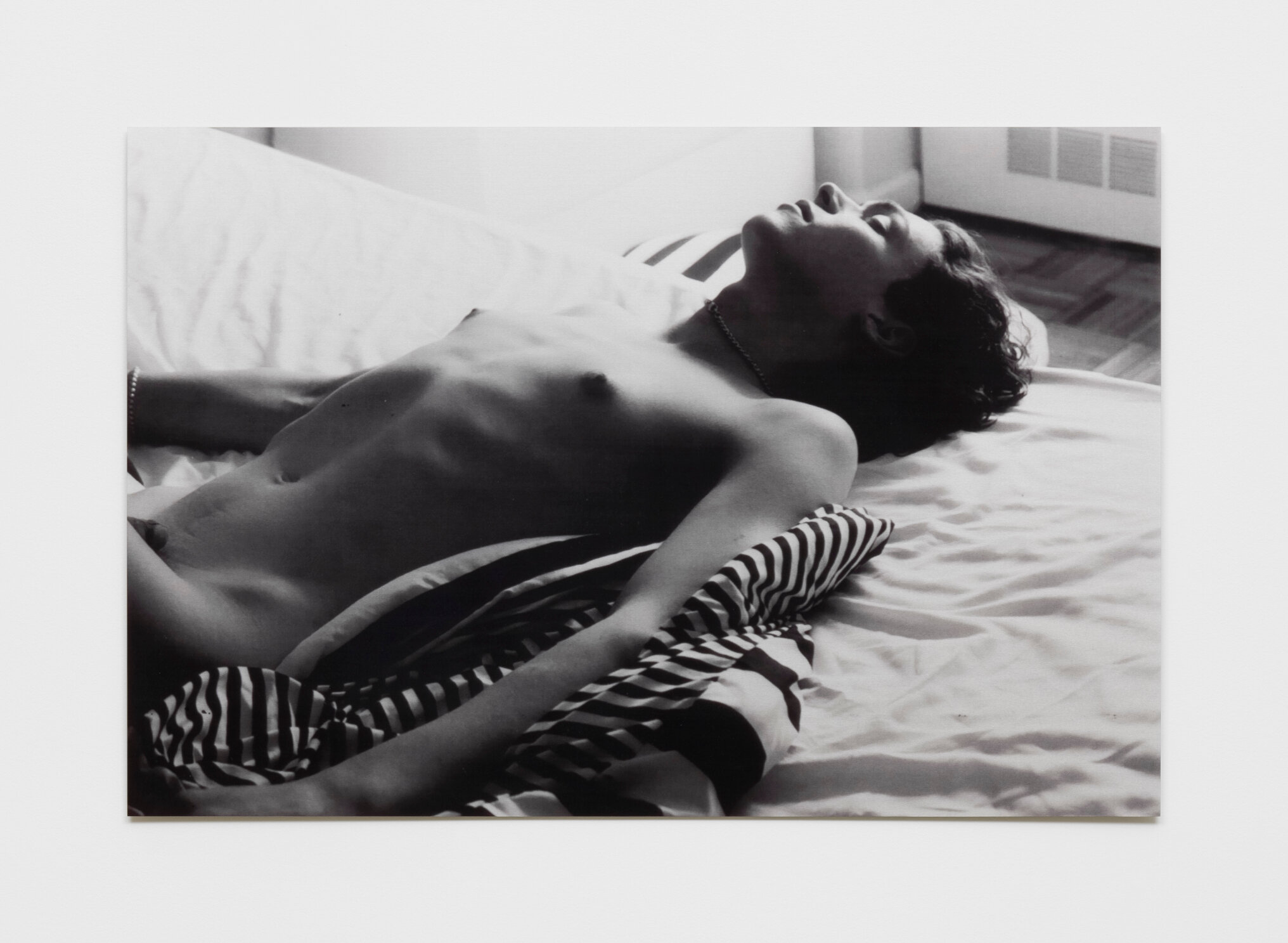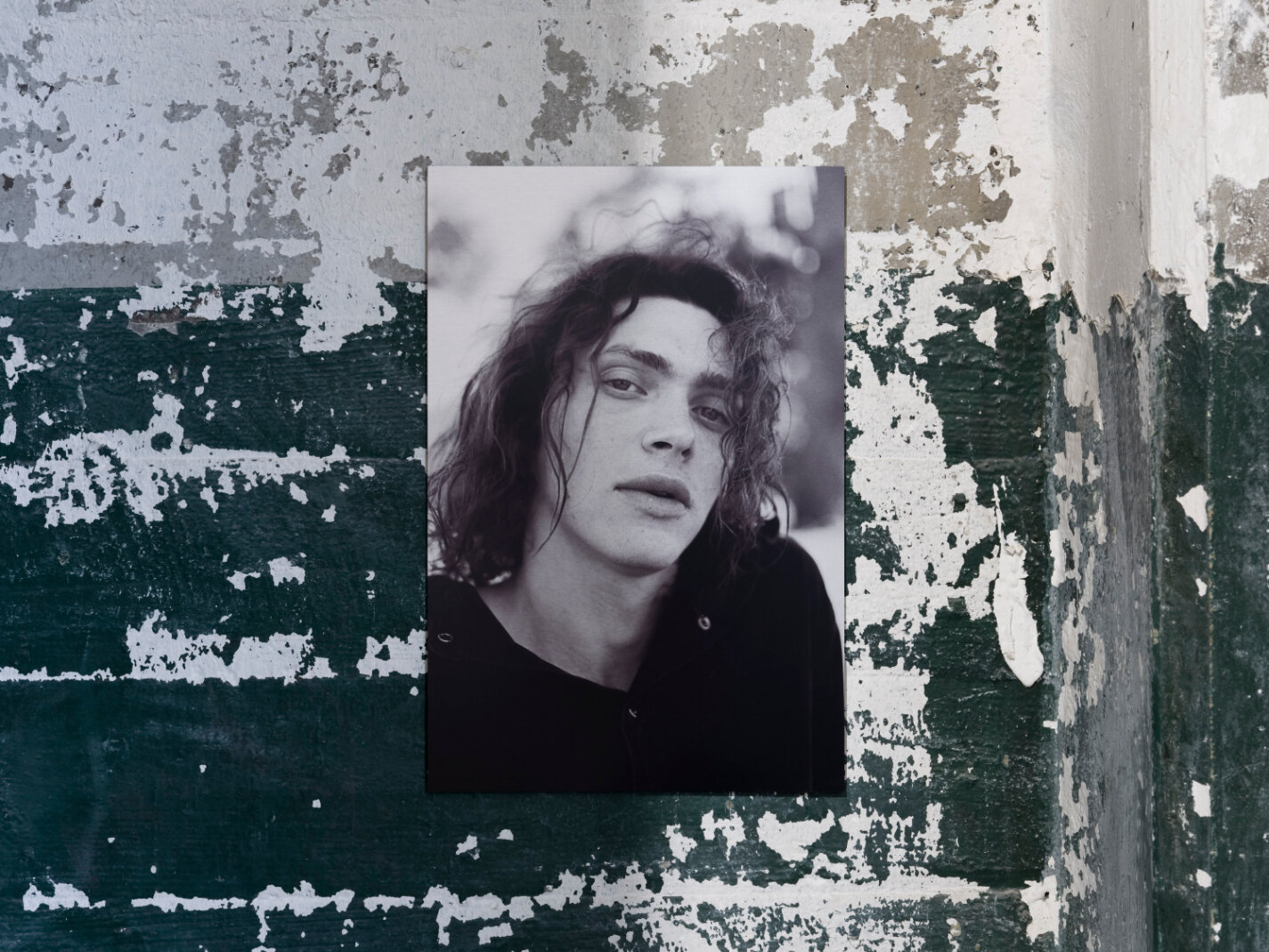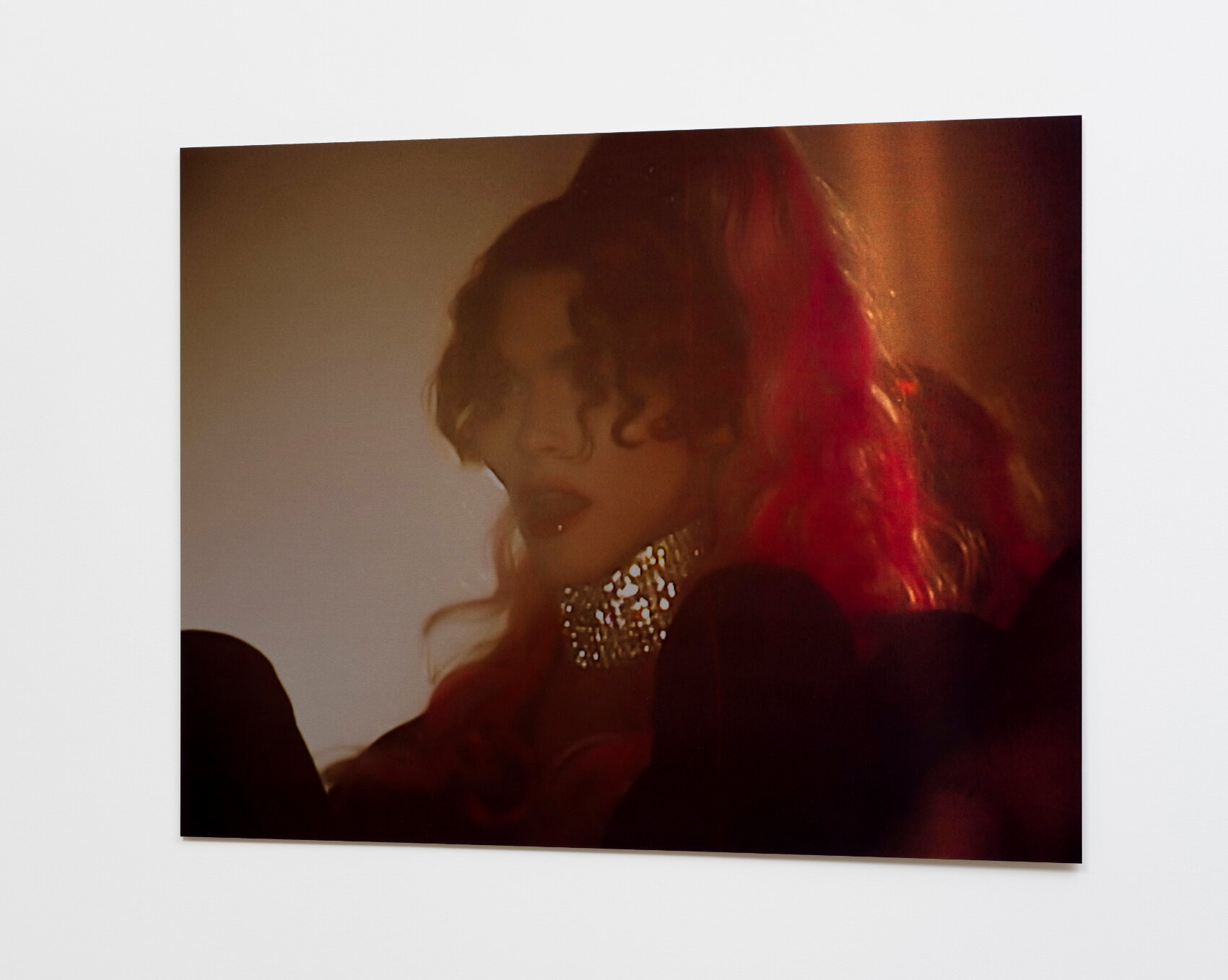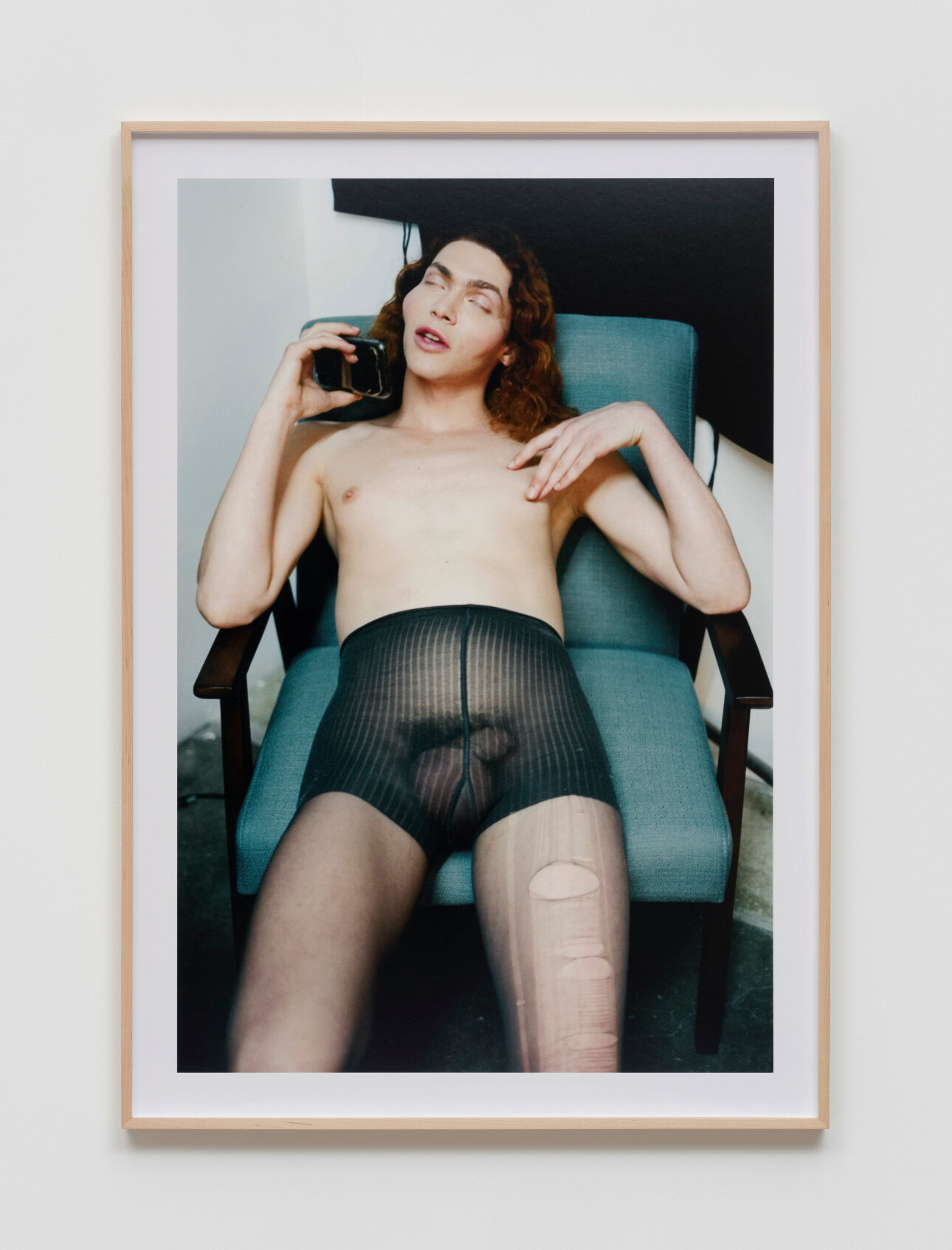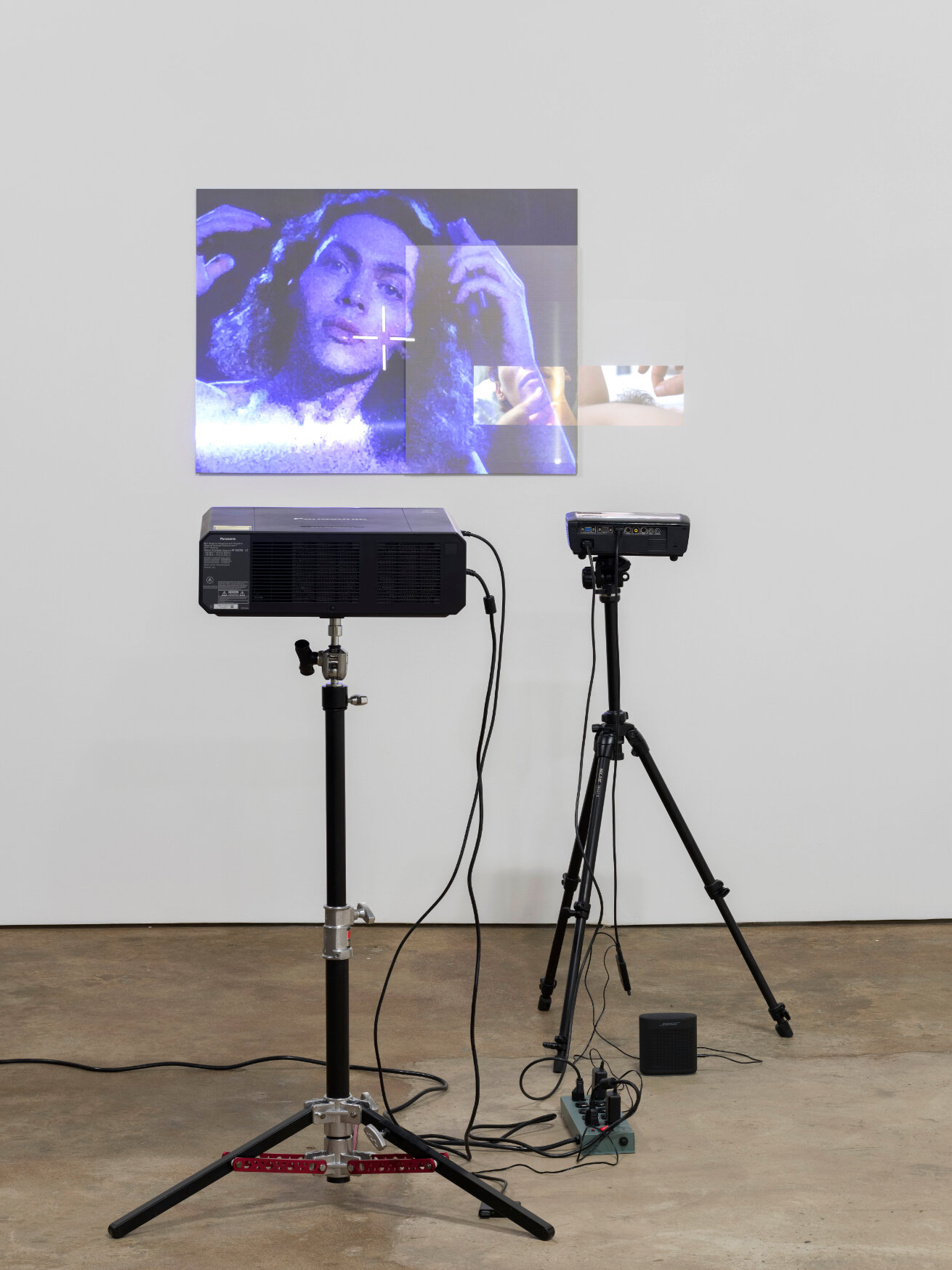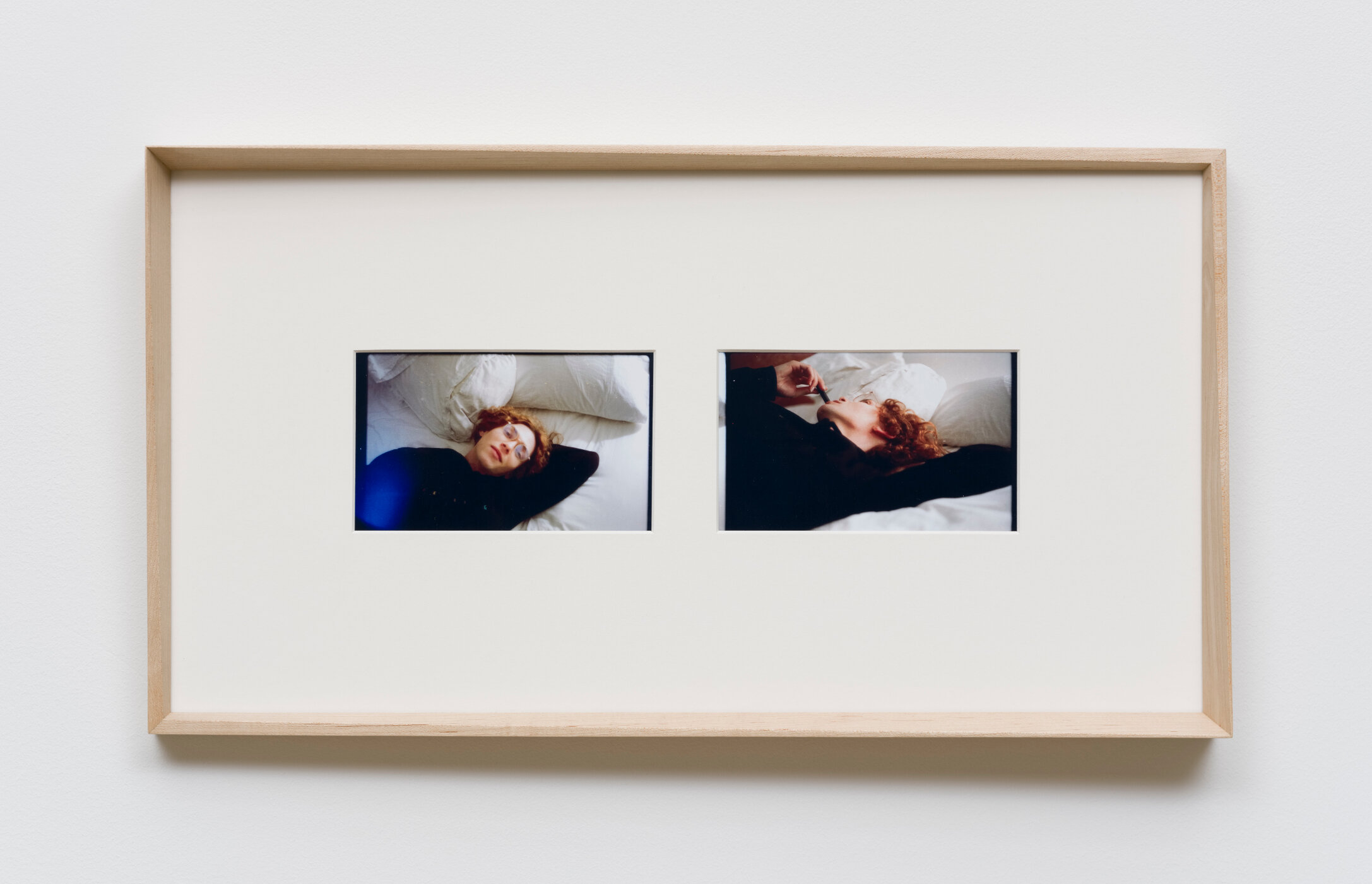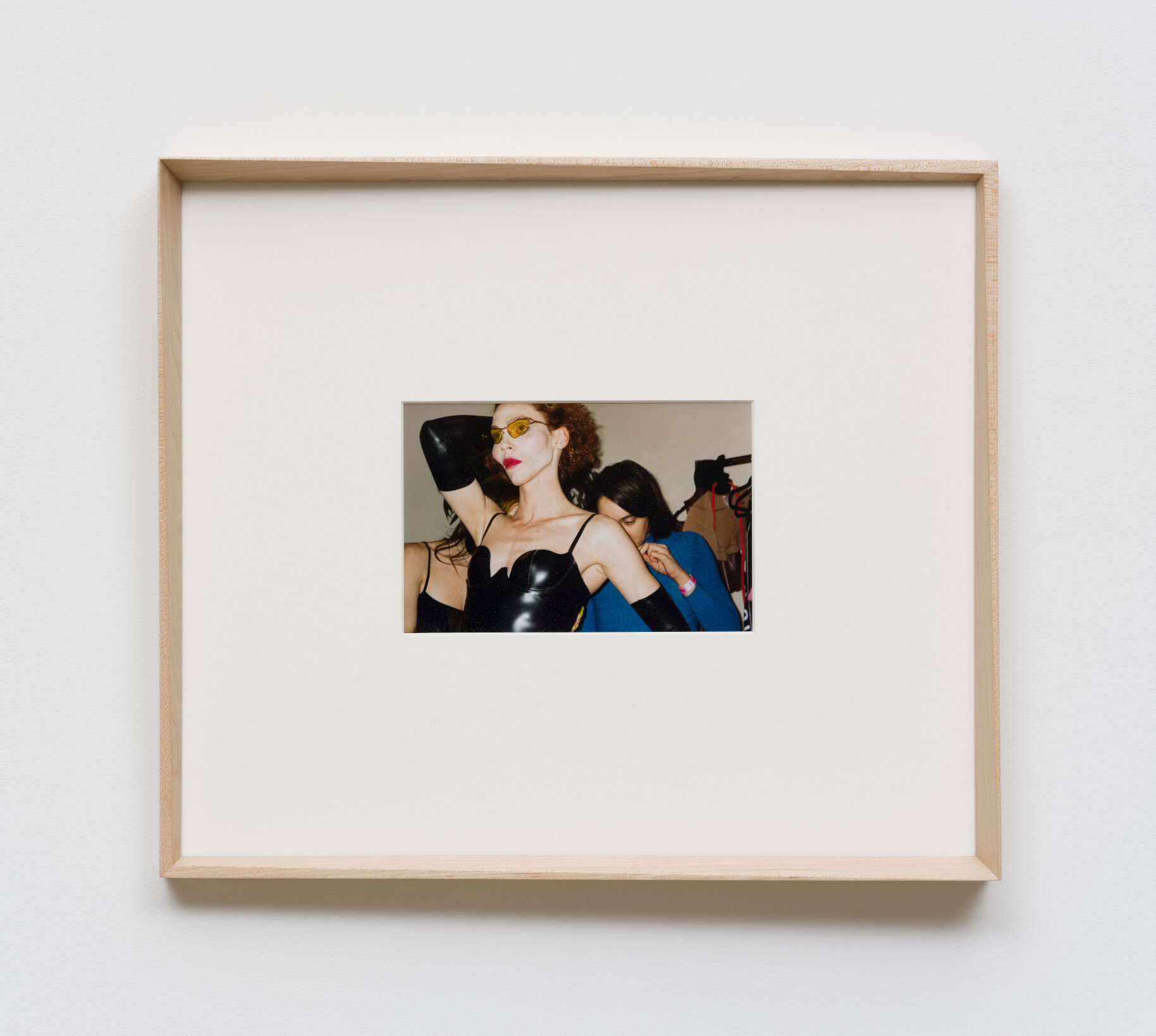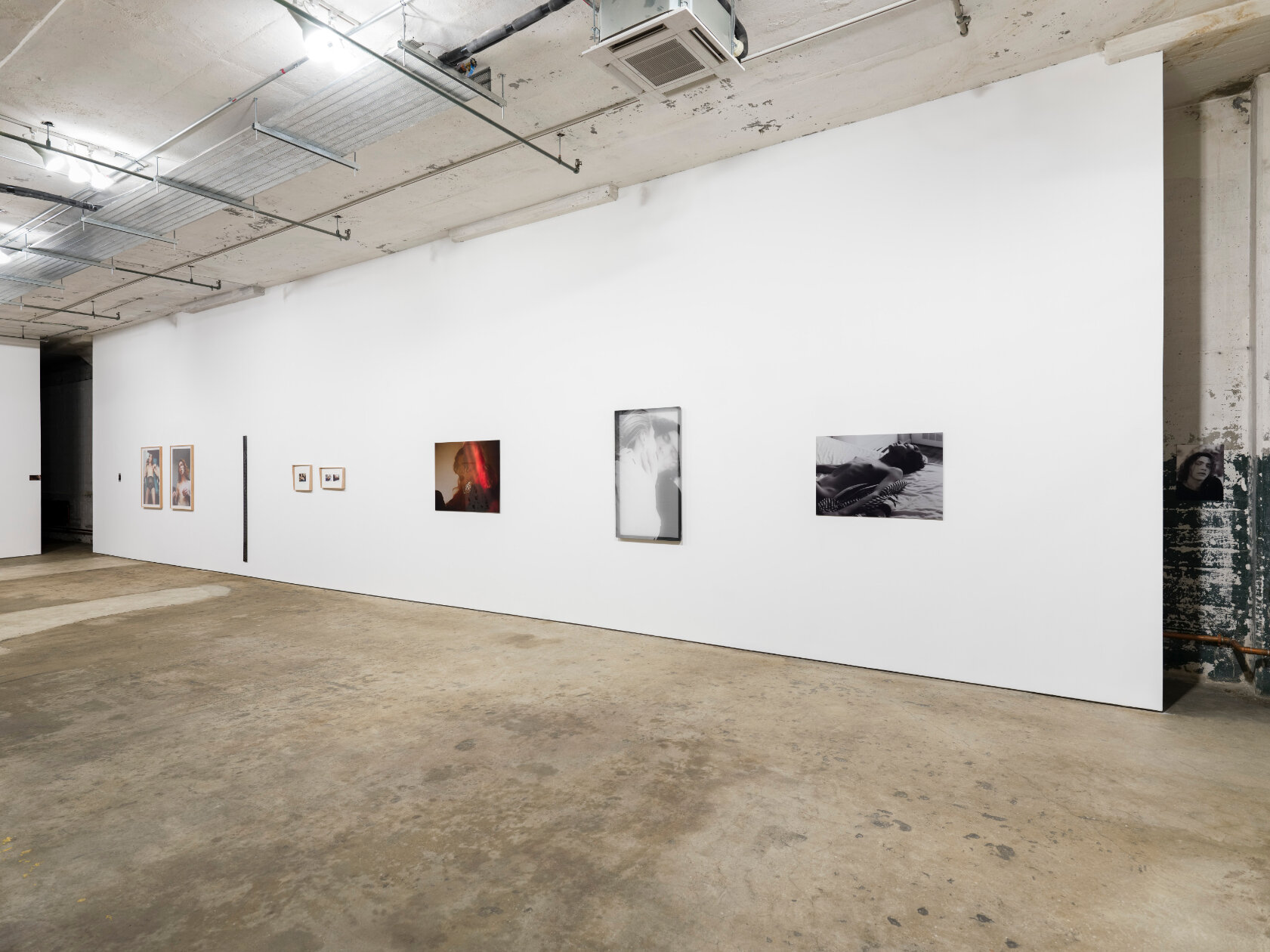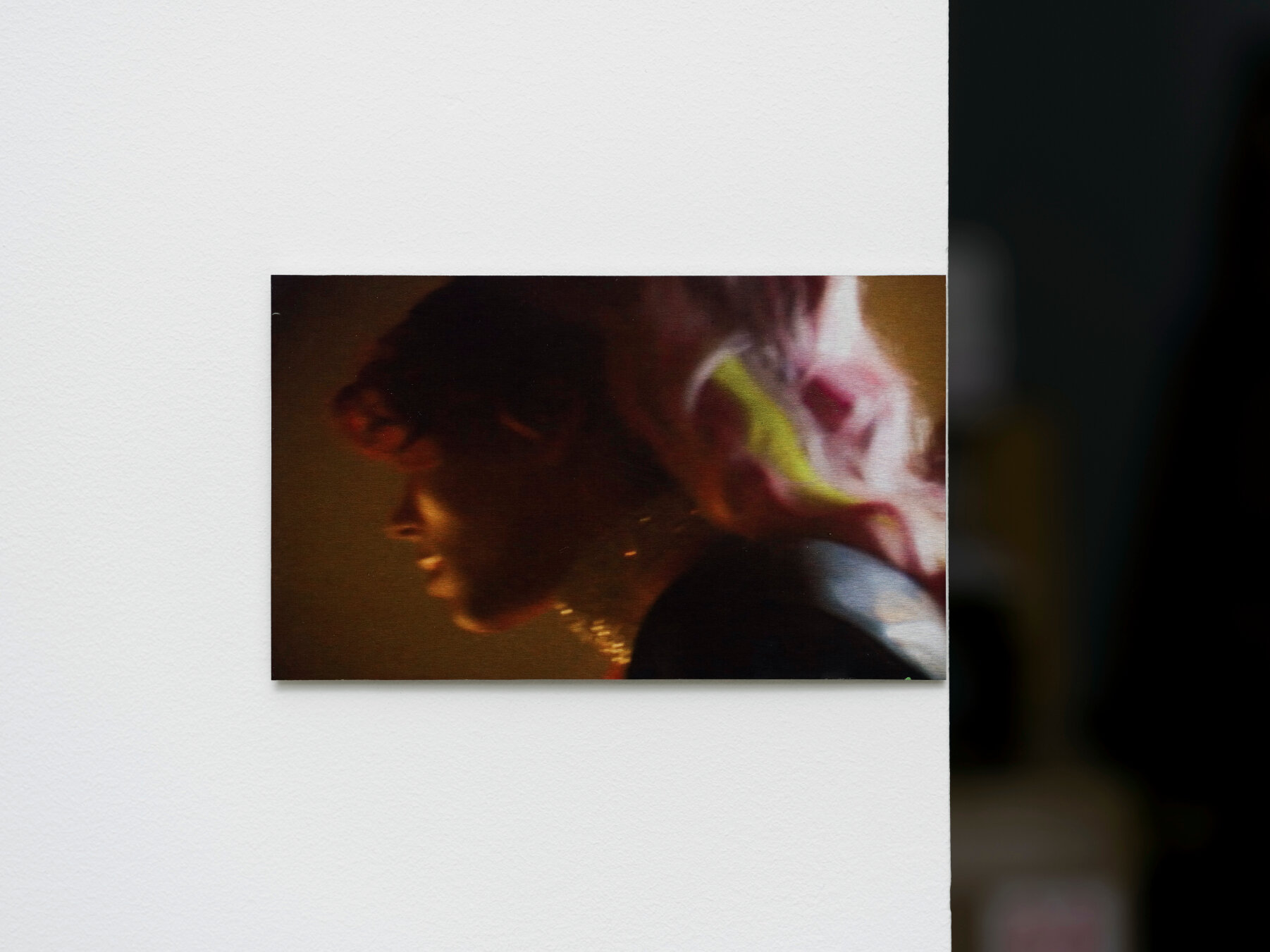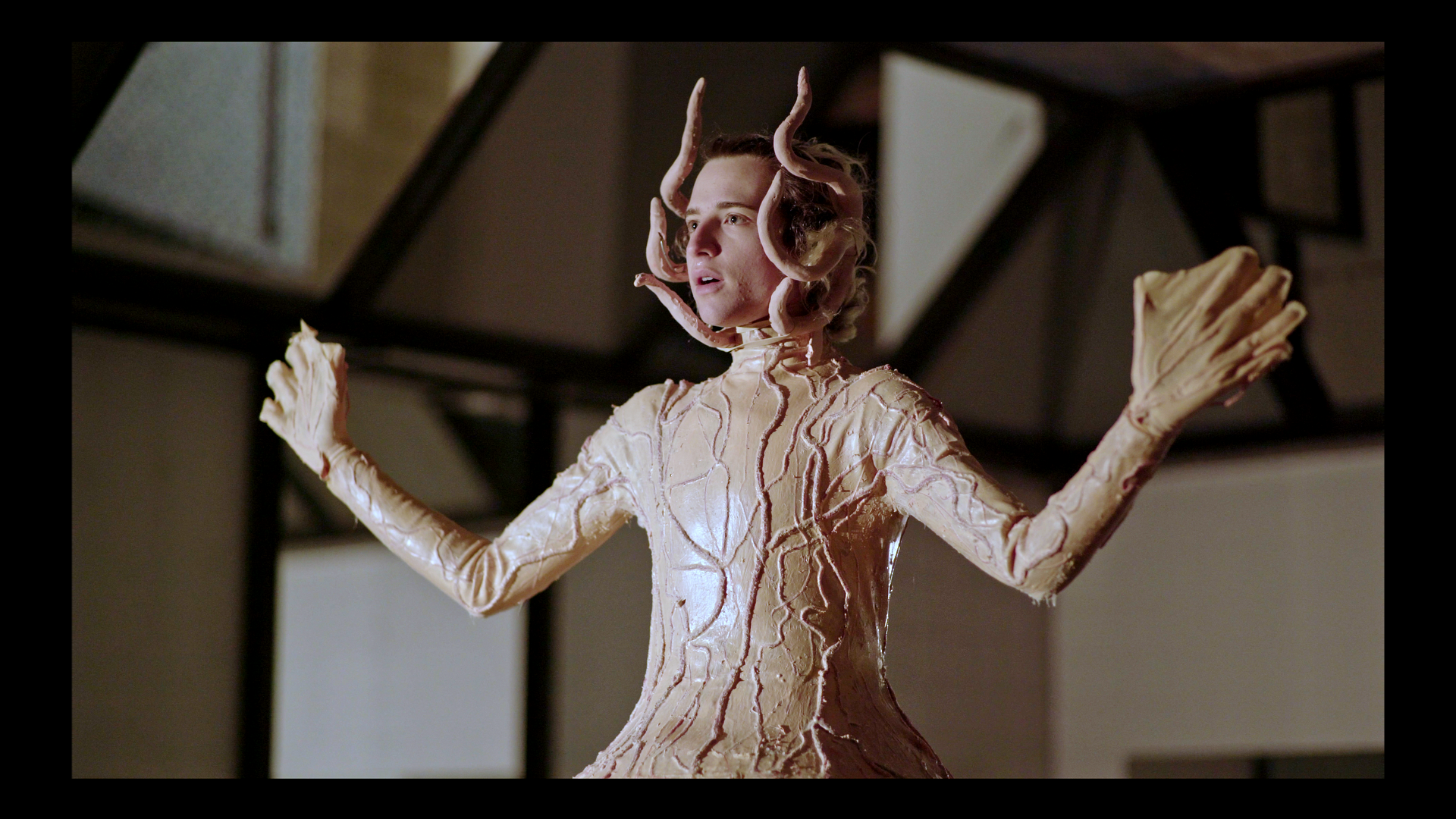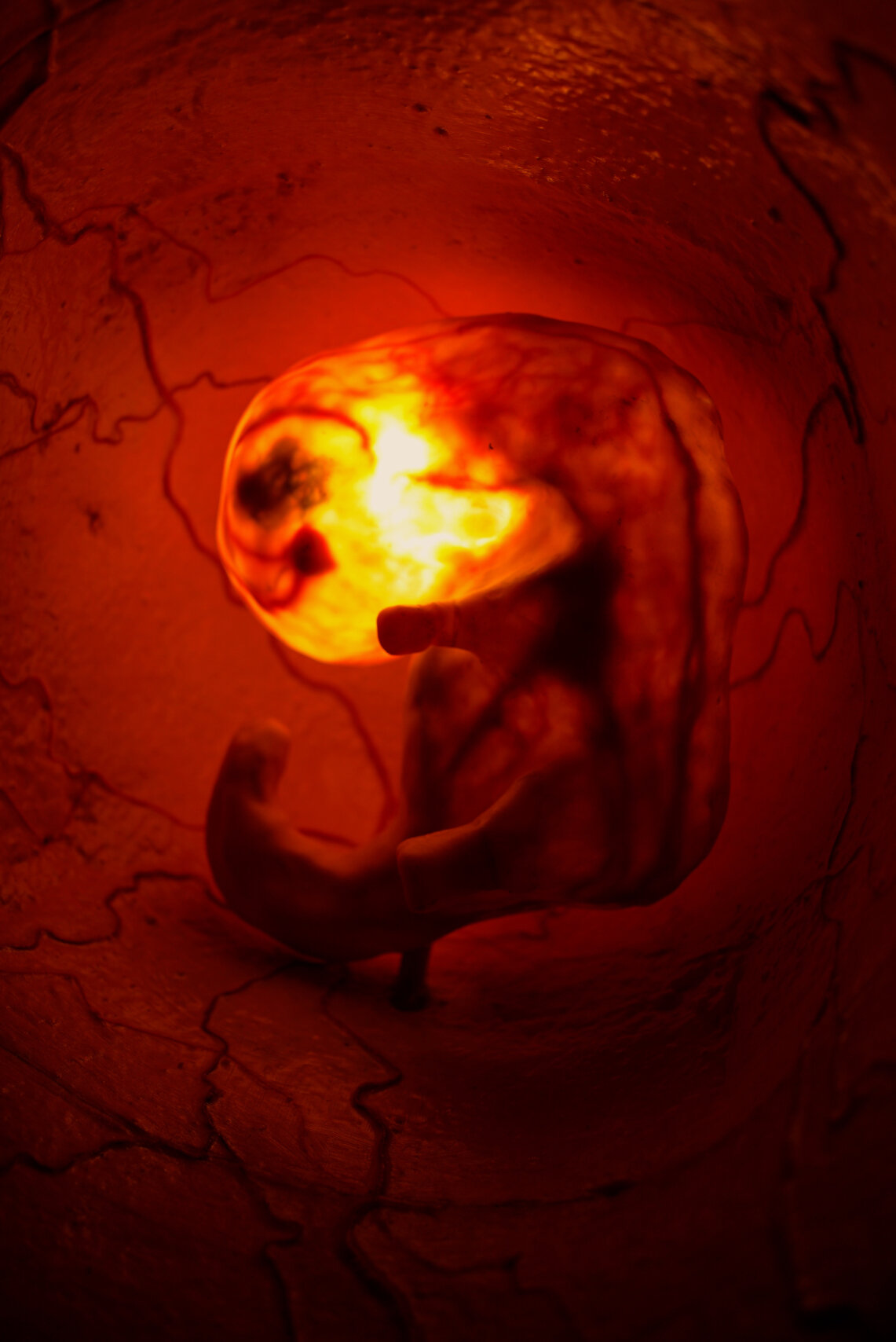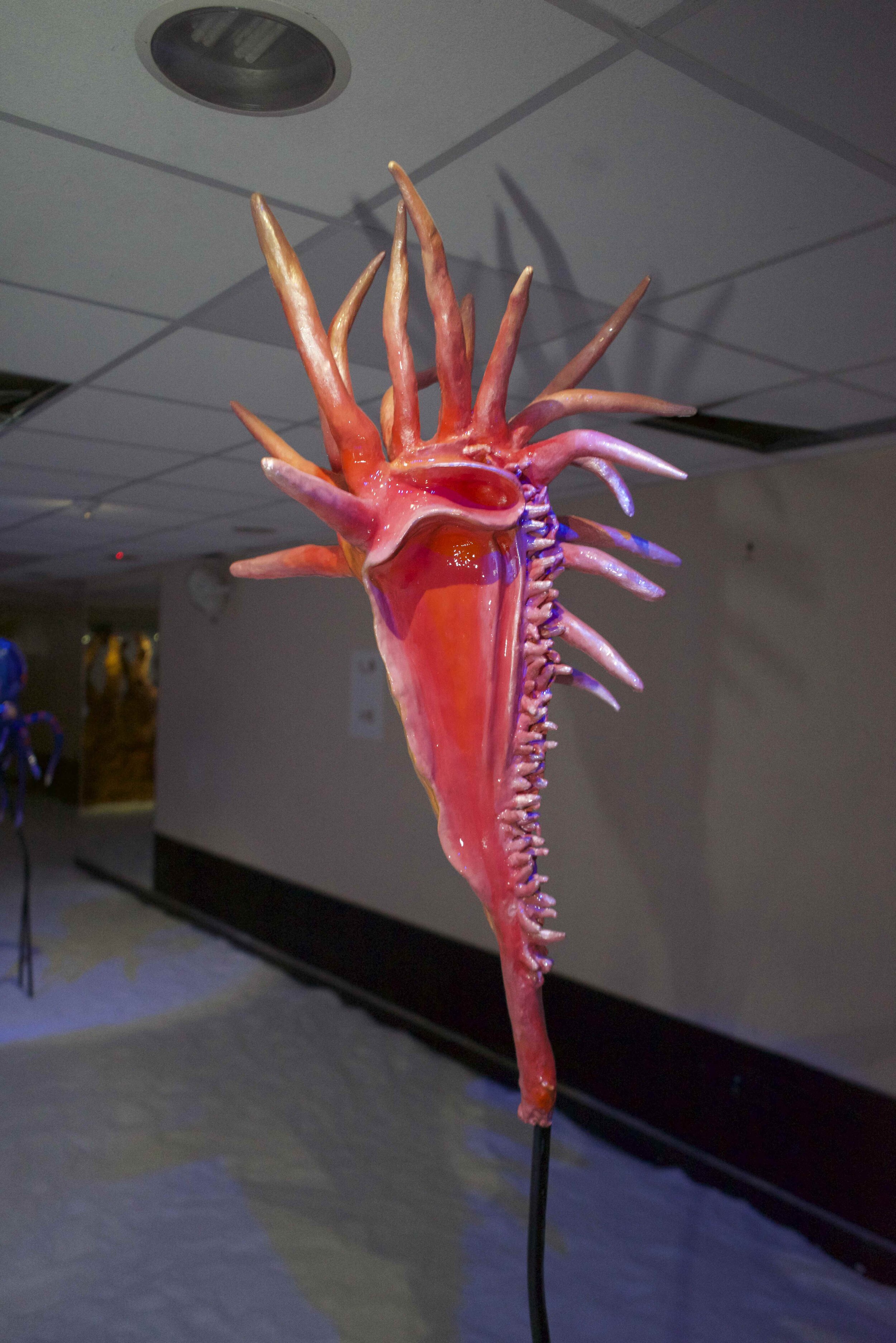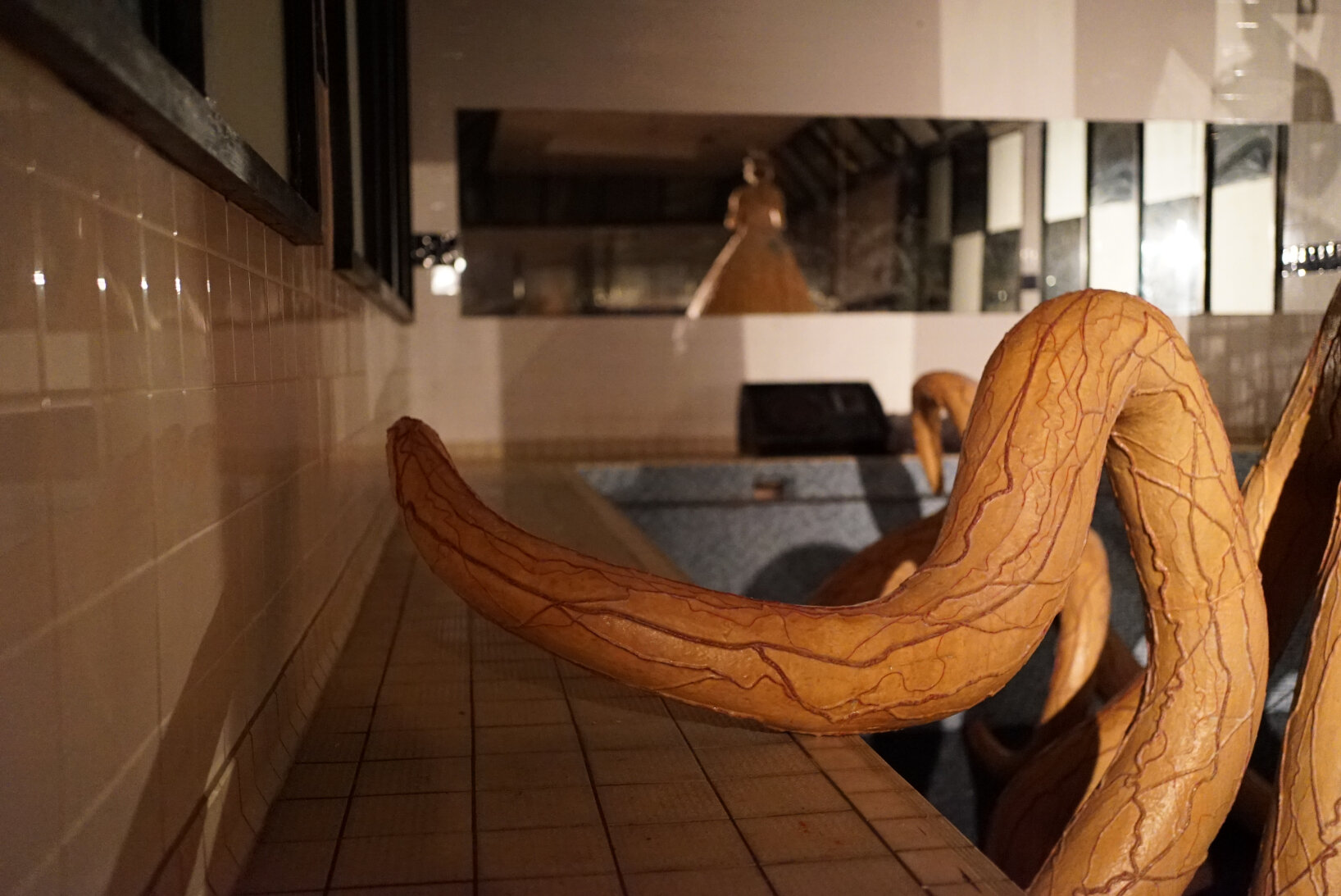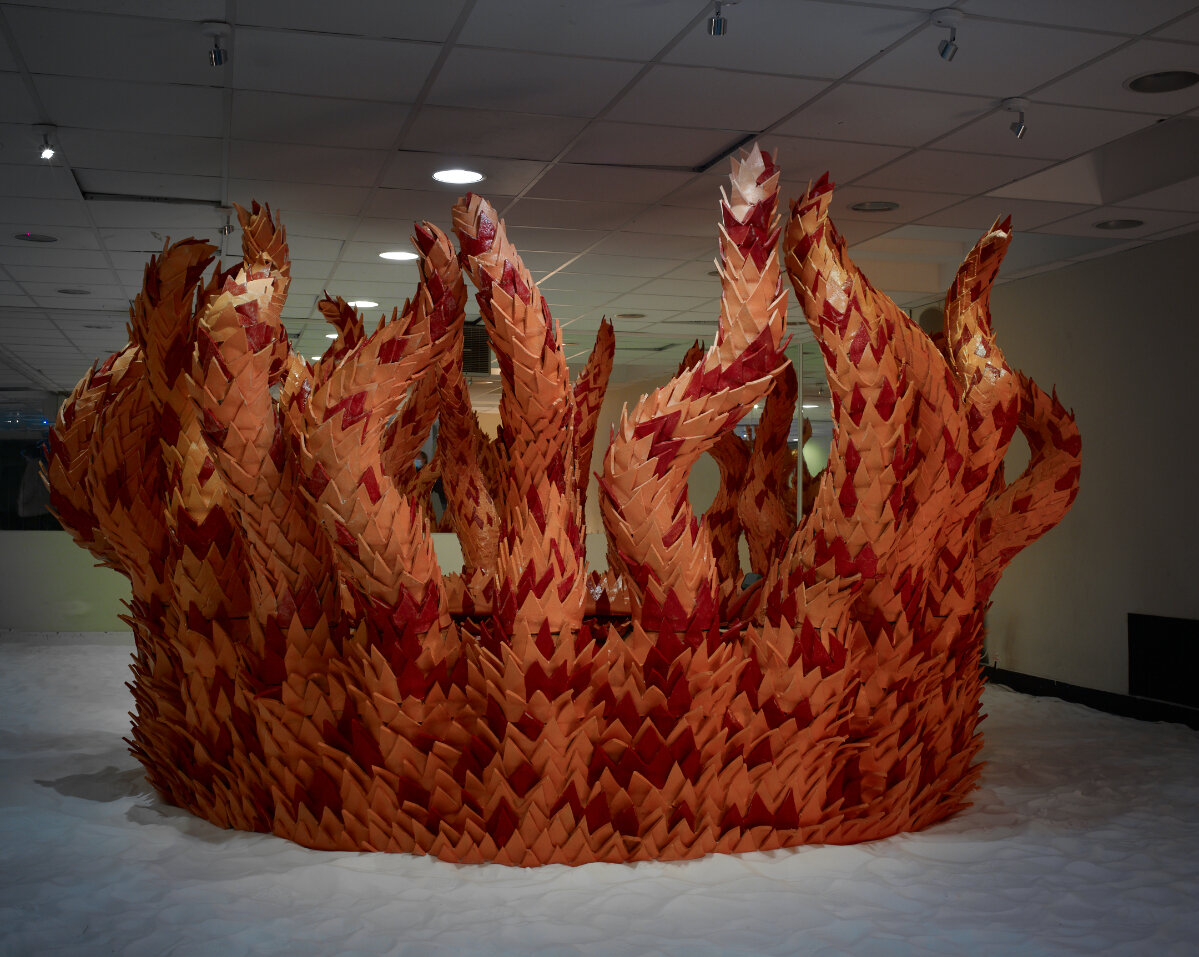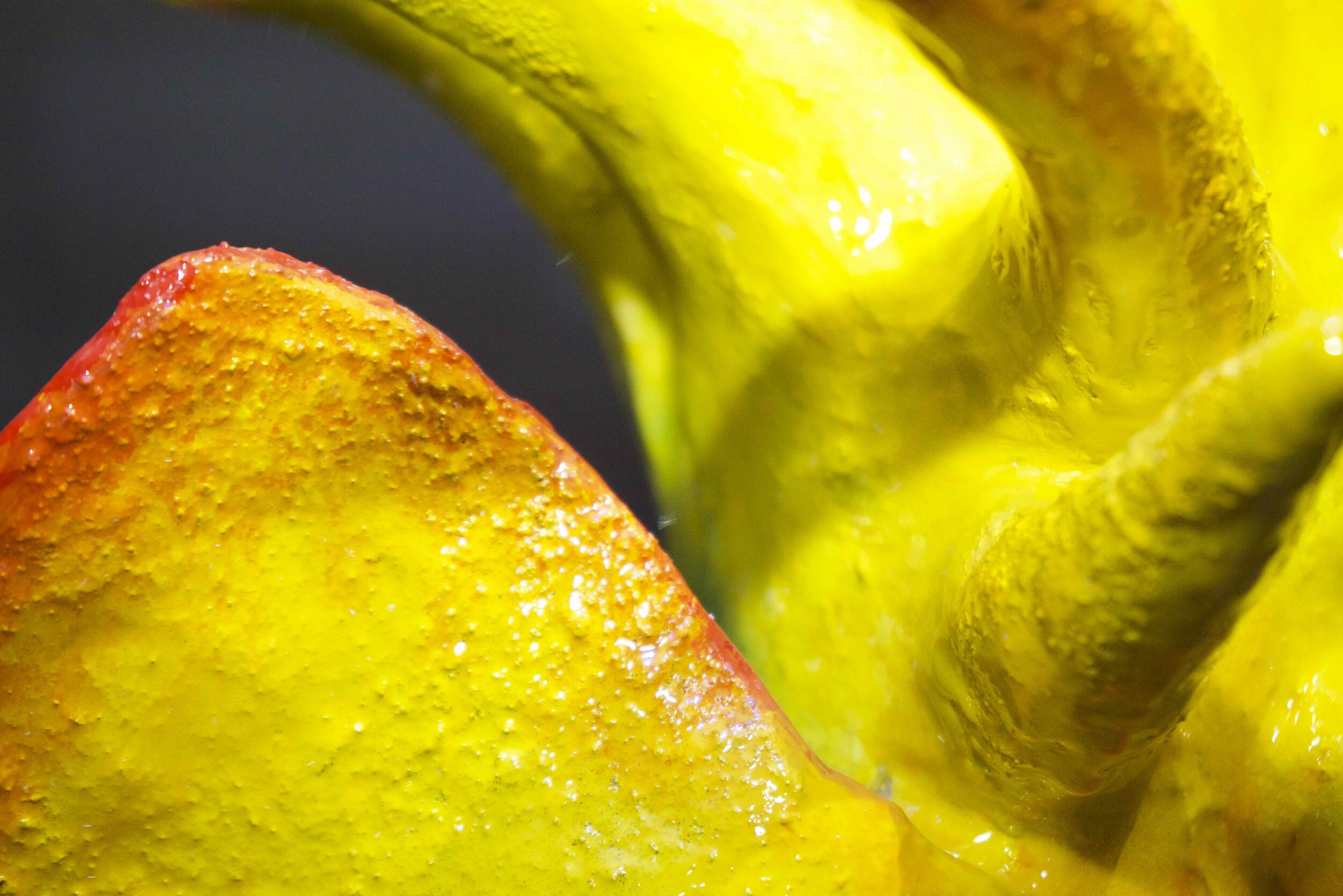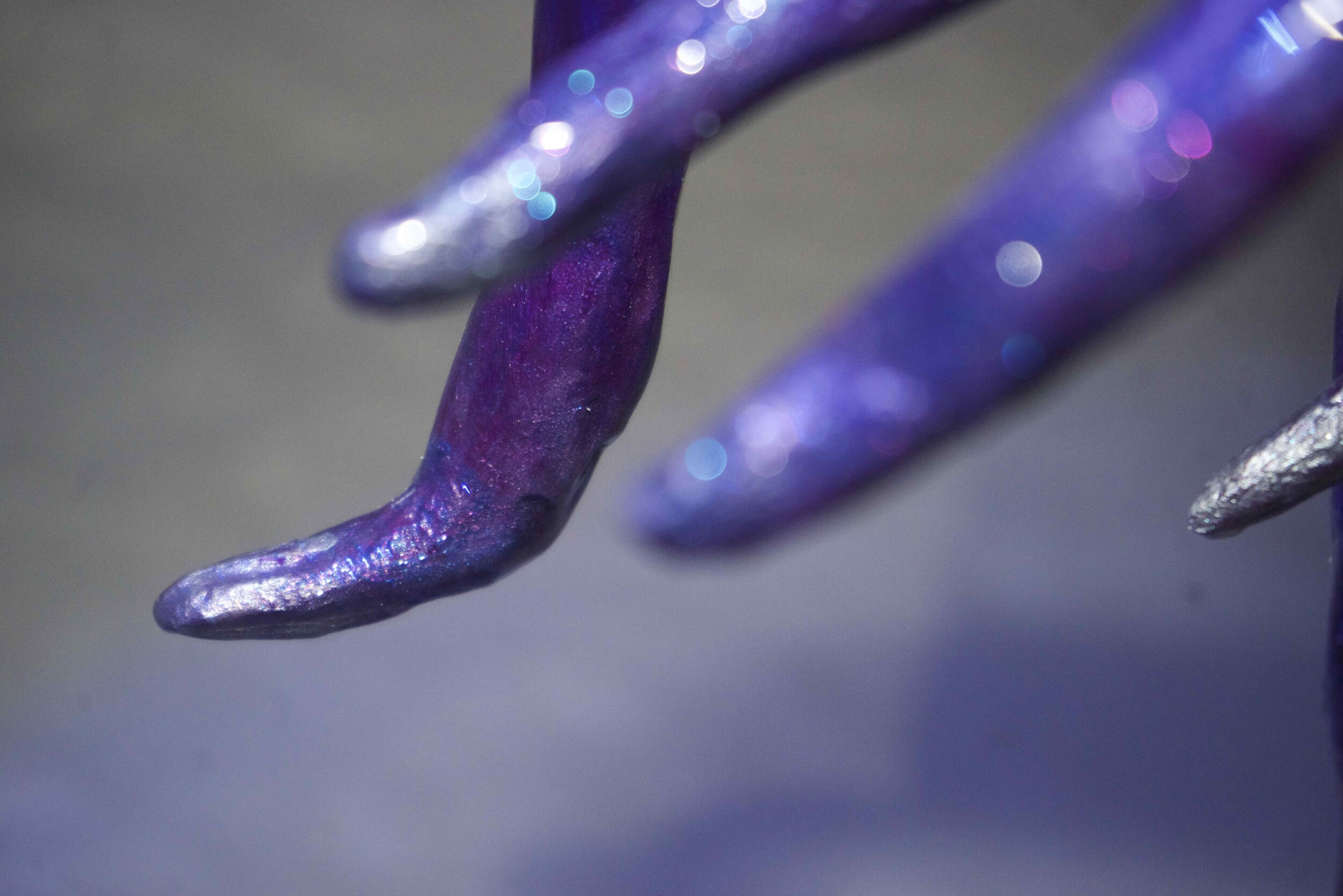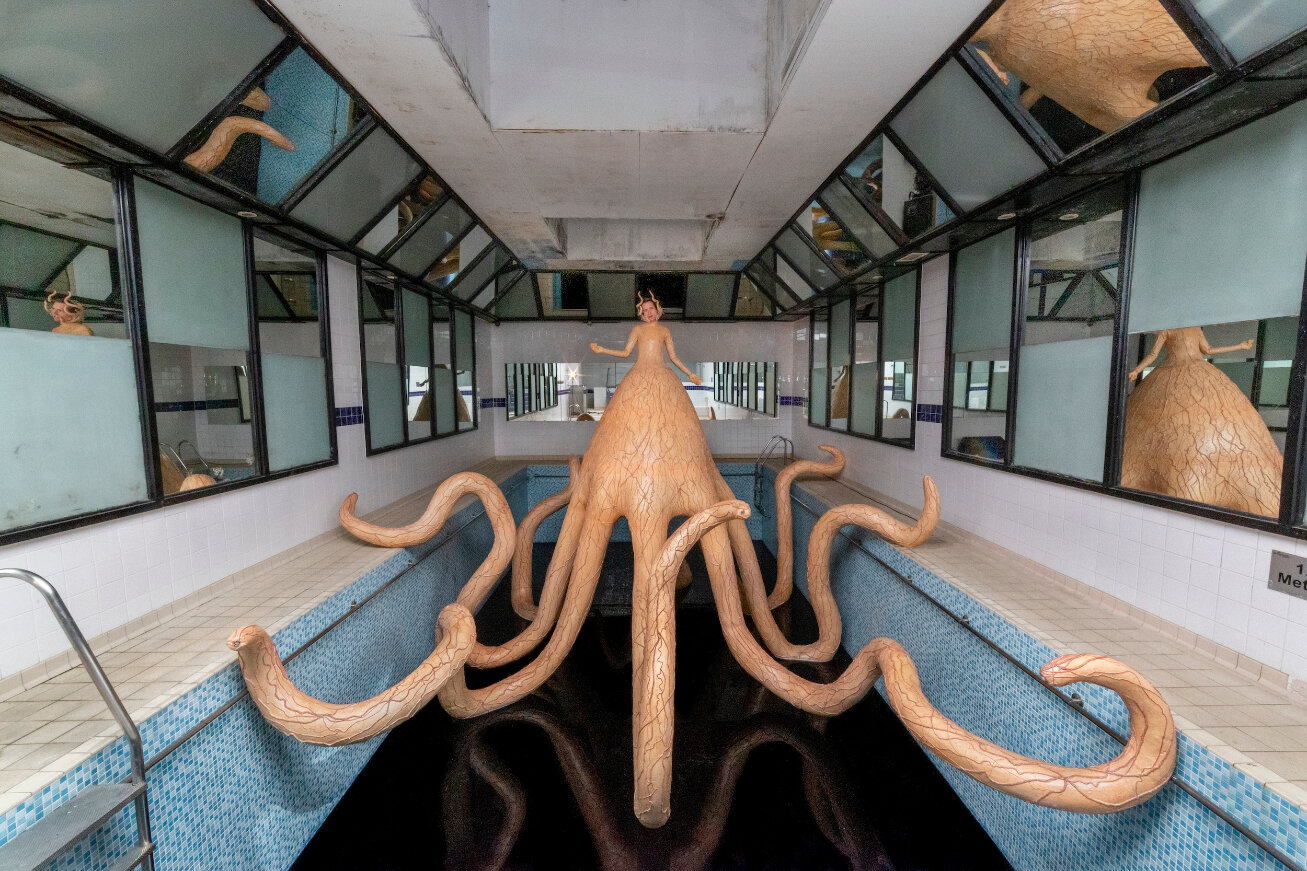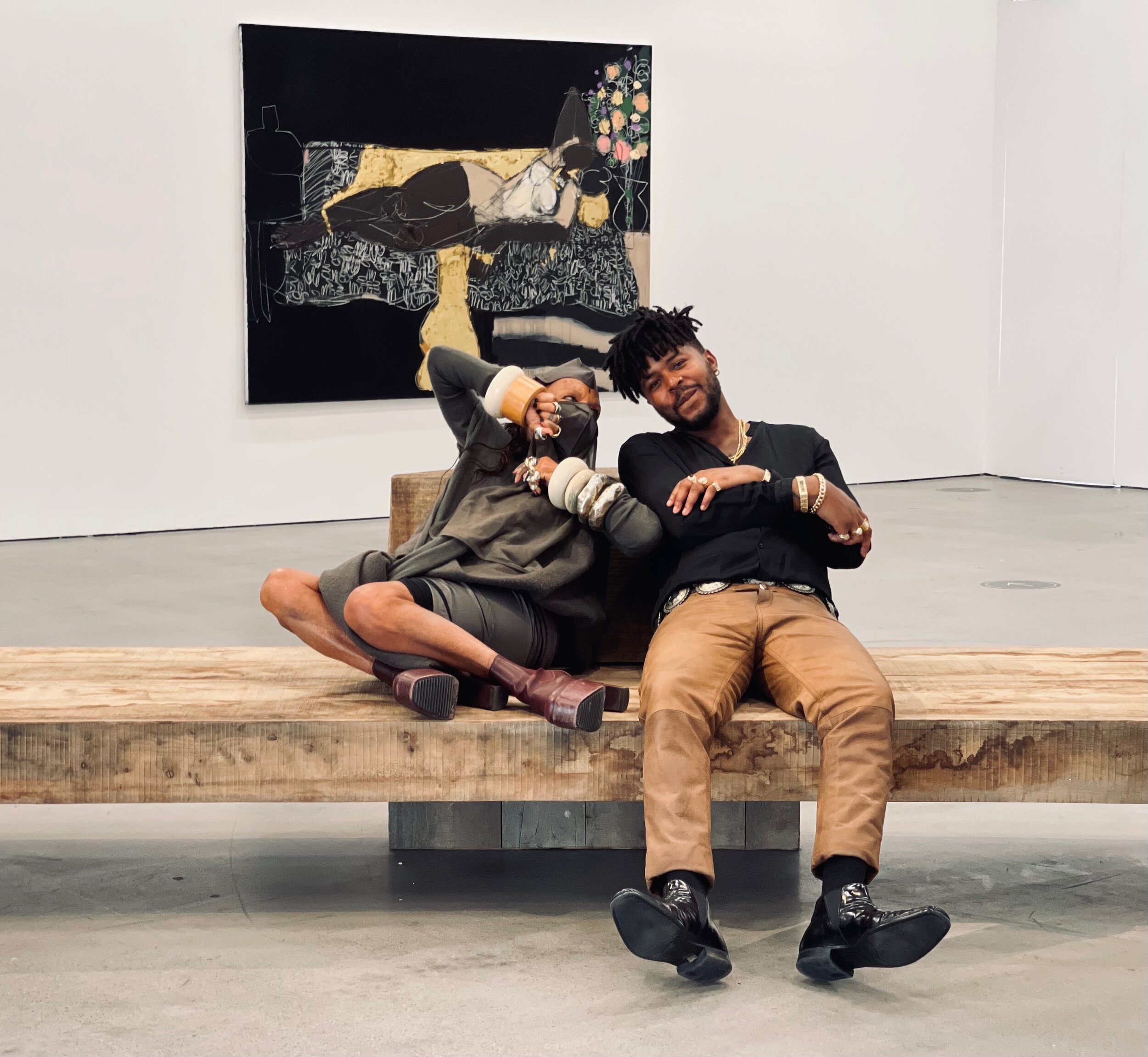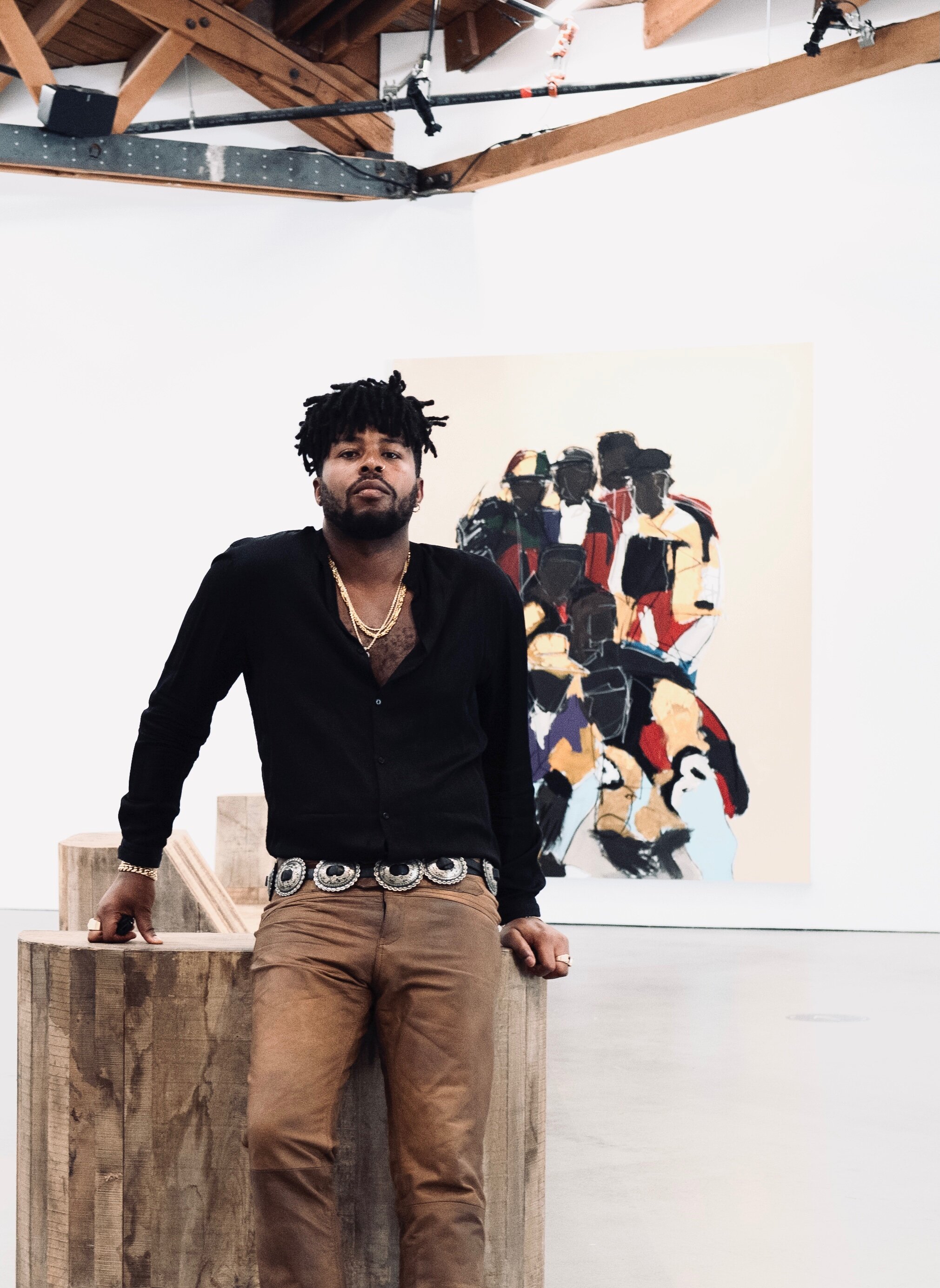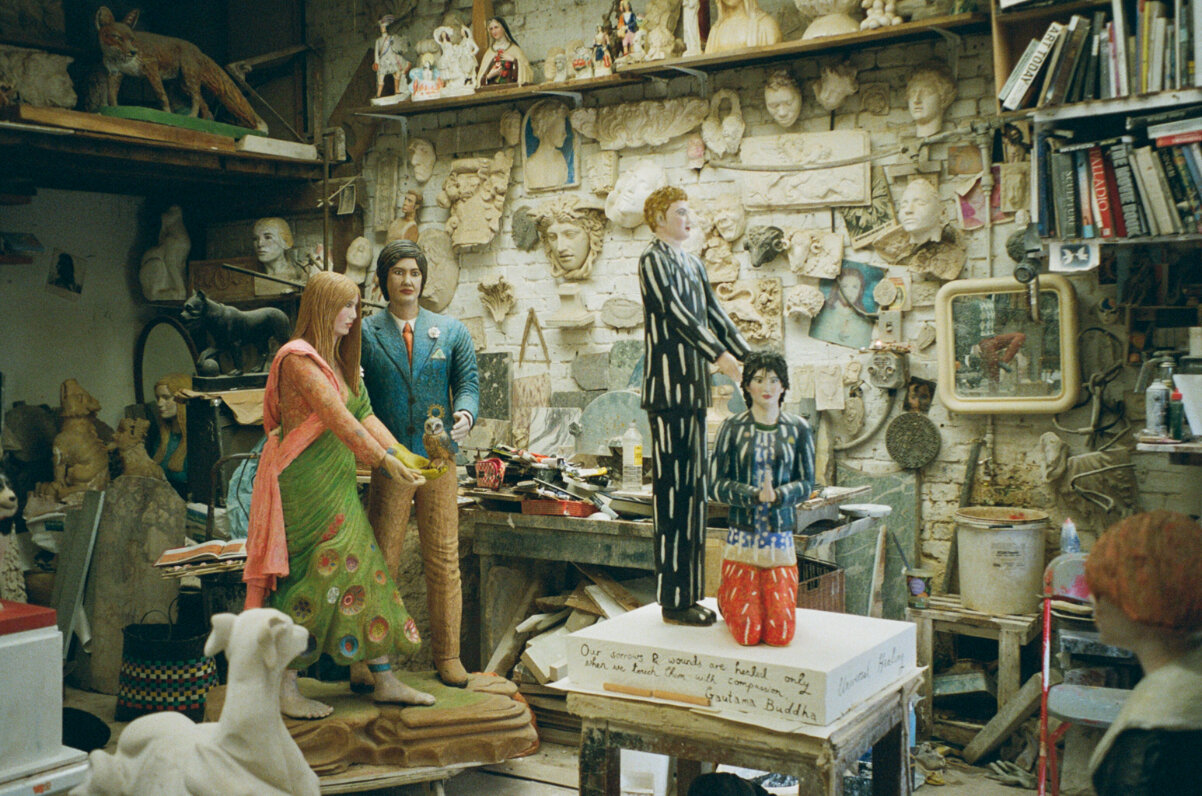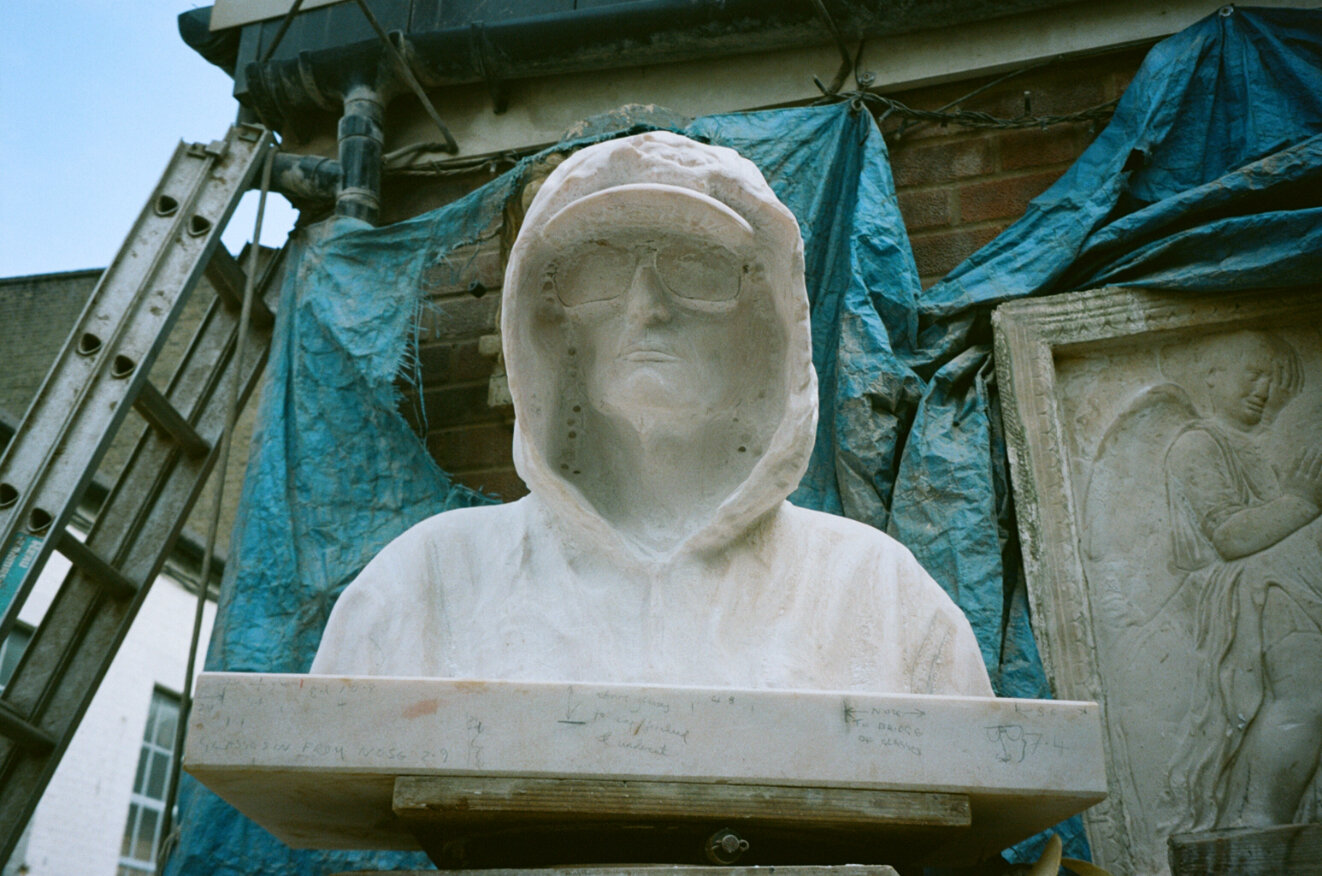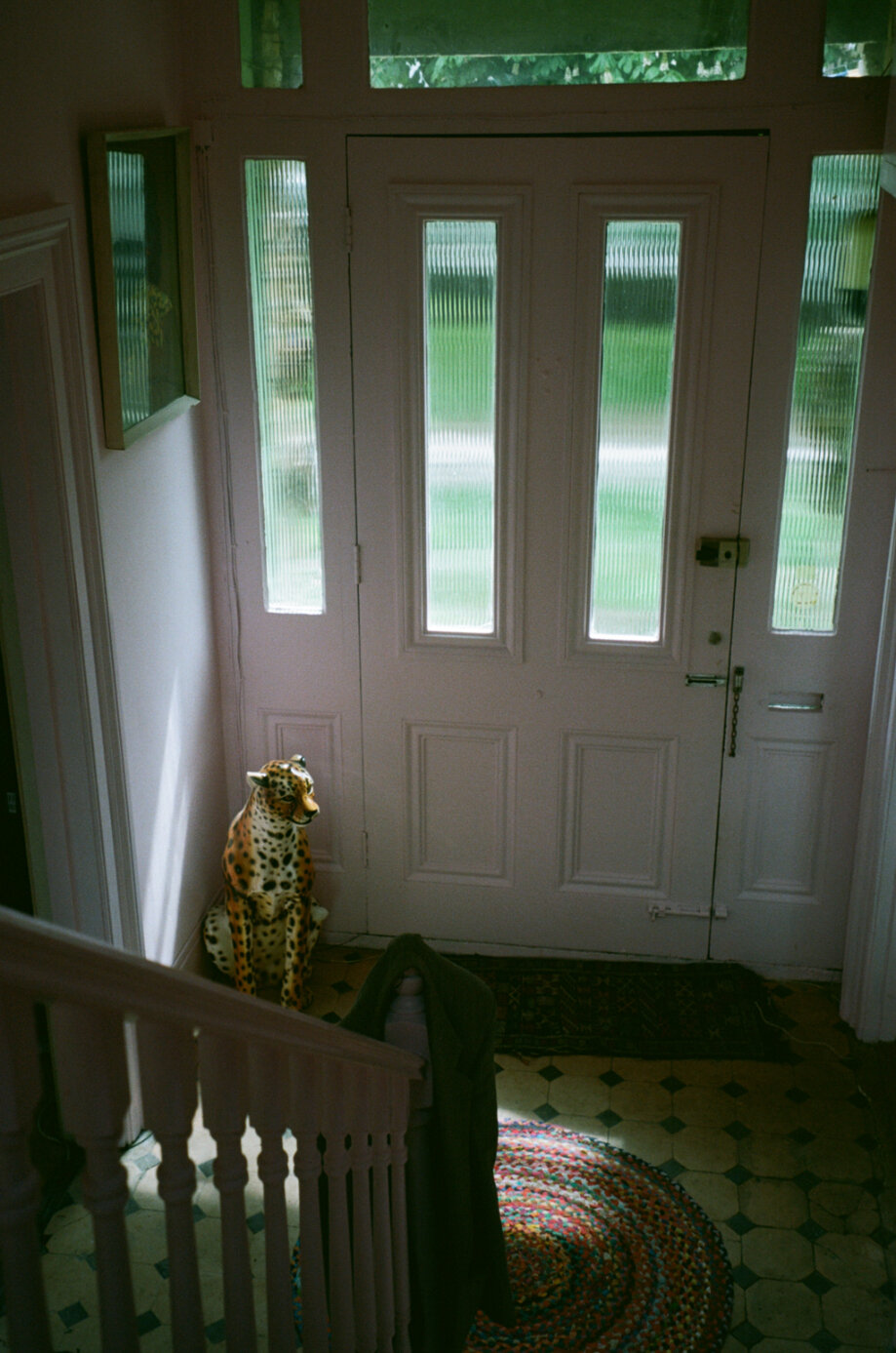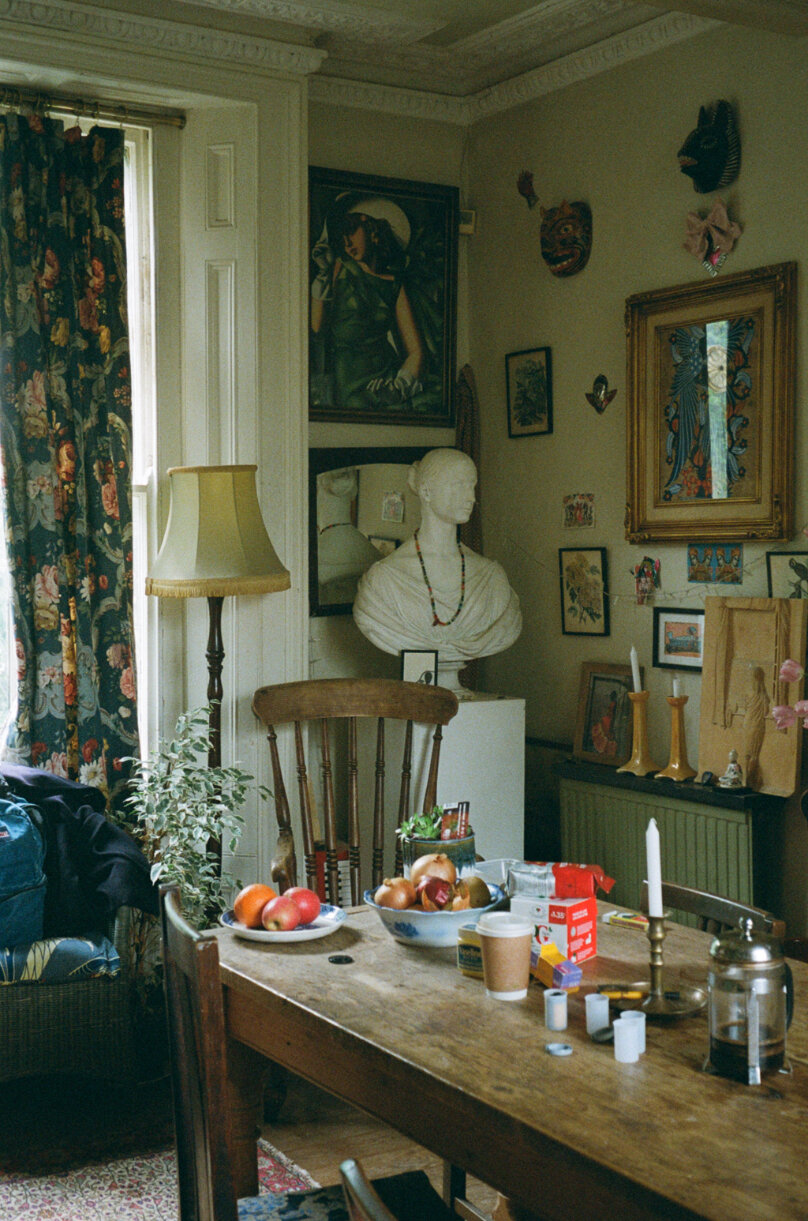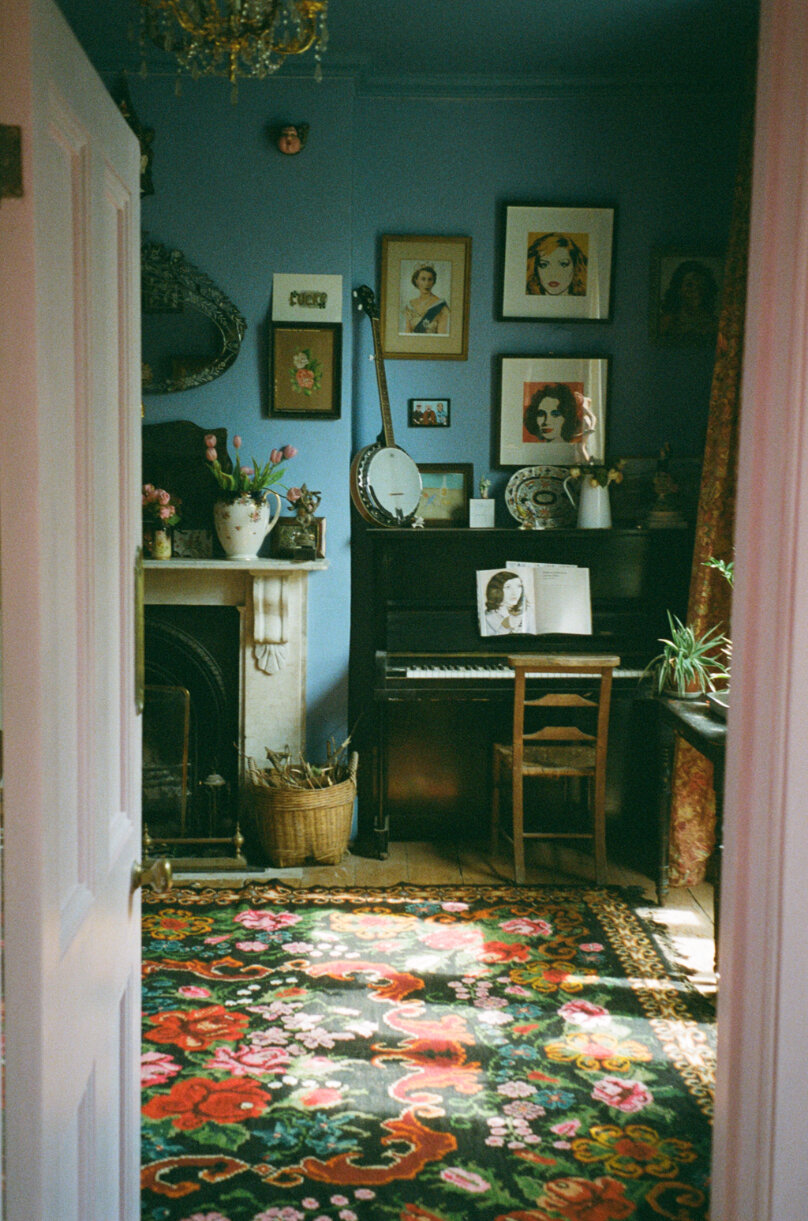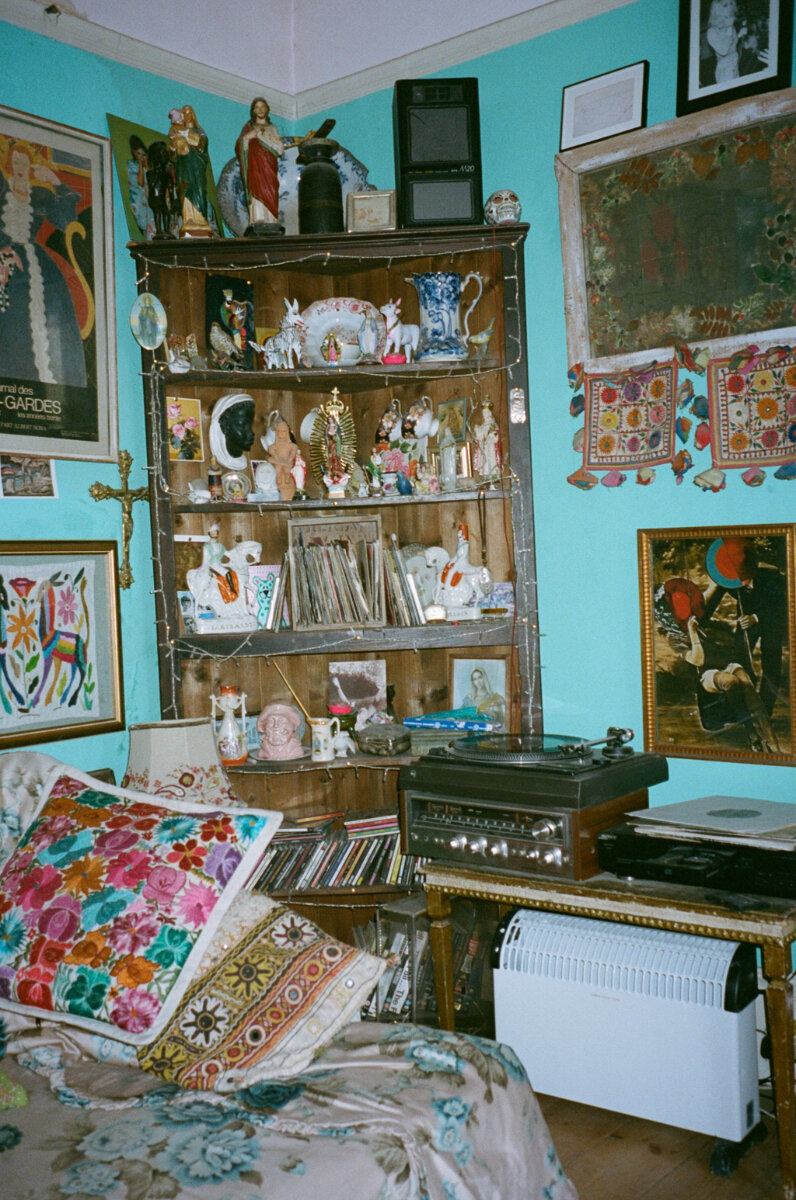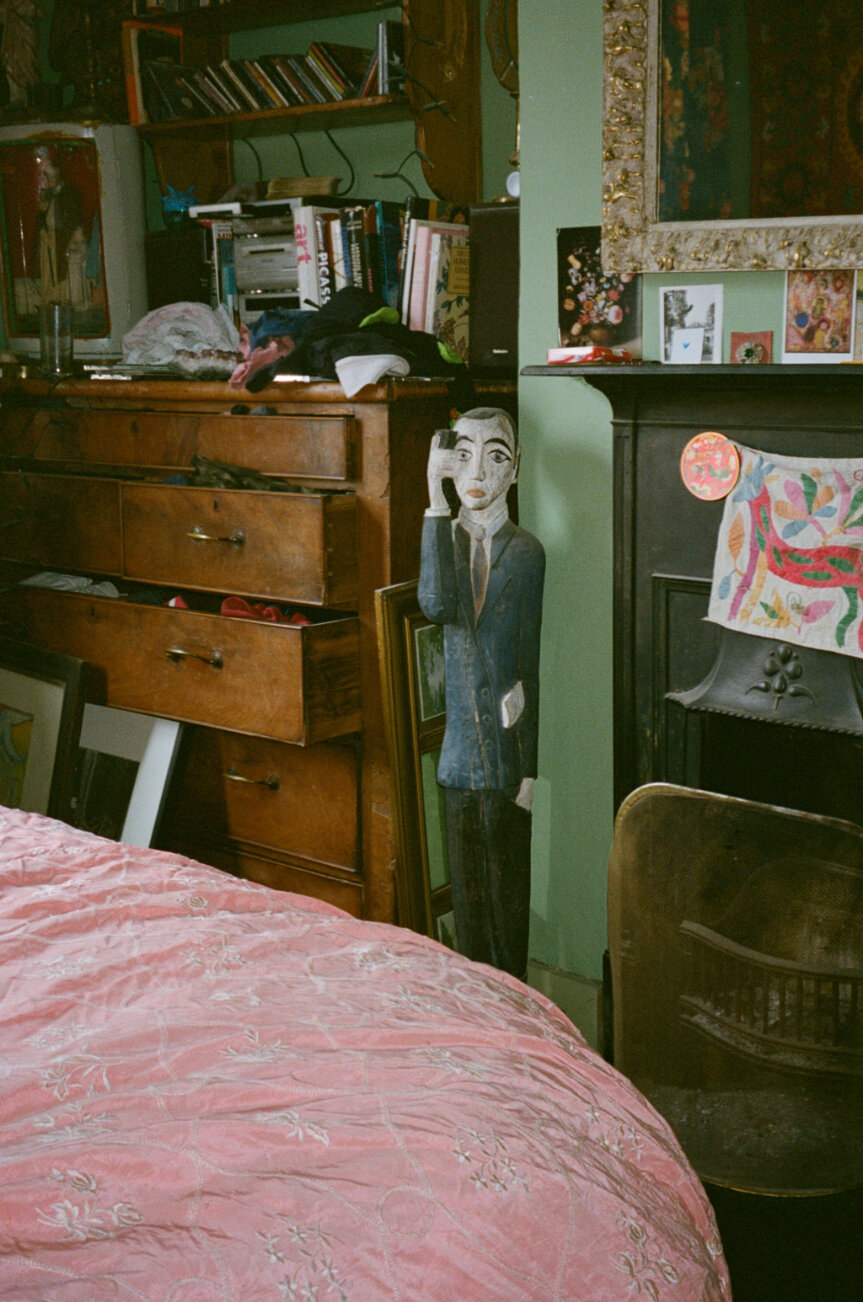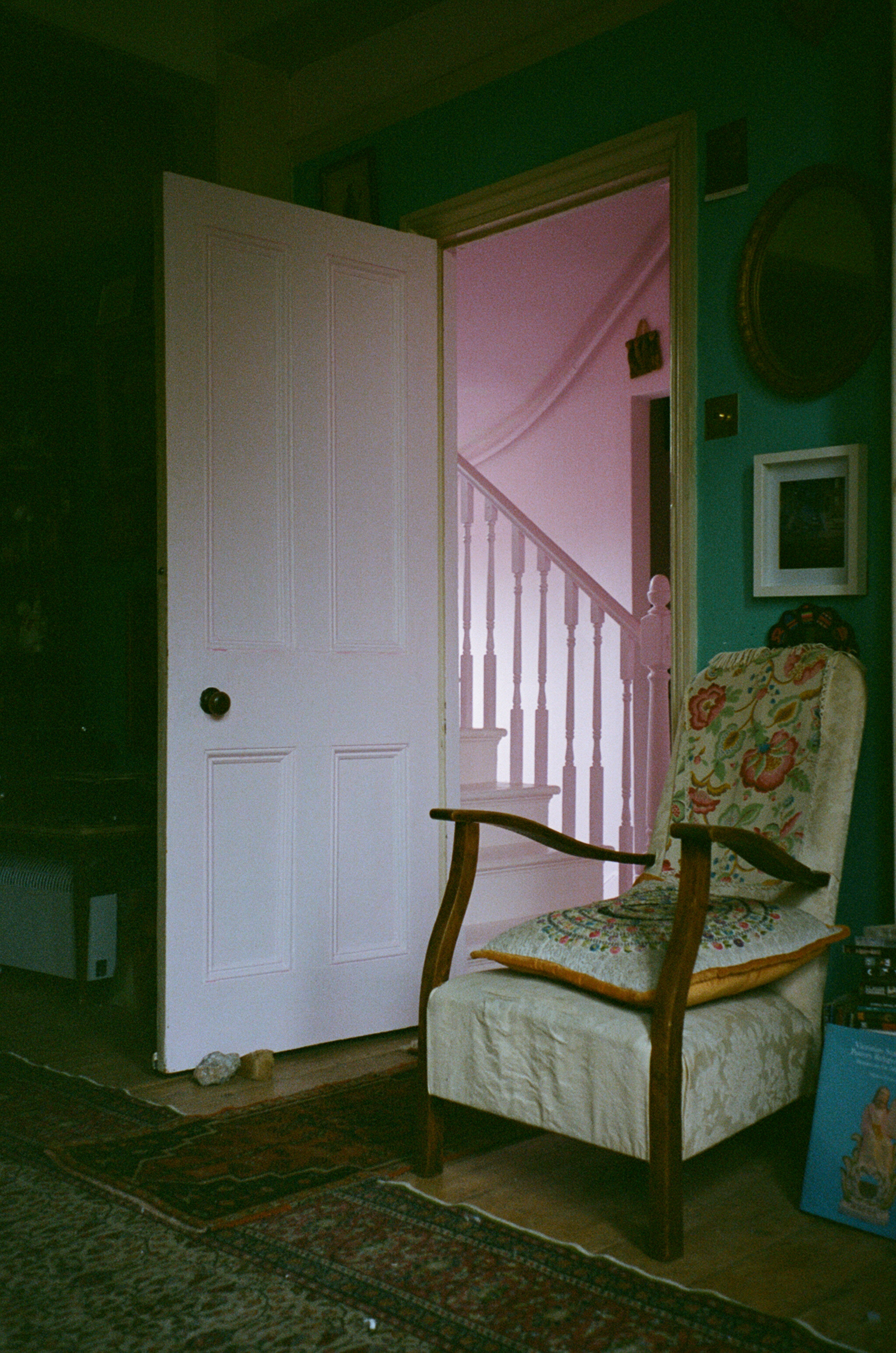text and photography by Shelley Holcomb
Standing in front of Los Angeles-based artist Veronica Fernandez’s paintings you may start to feel as if you’re part of a fever dream or someone else’s past life regression. They are raw and autobiographical, a place where the viewer is invited to float through fragments of extremely personal memories while being entertained by the various textures and materials Fernandez has thoughtfully arranged in each work. There are painterly aspects that divide you from reality, yet it still feels as if you're walking into someone else's actual space and you’re welcome to stay as long as you’d like.
The paintings are in essence a mapping of her family lineage, their struggles and their persistence captured through the lens of old photographs passed down from her grandmother. Through these photographs, Fernandez is navigating her own identity as it relates to her childhood and her closeness to family. She manipulates these images to tell a story of adolescence that most of us couldn’t comprehend and yet she finds strength in these memories, weaving them into a narrative about what it means to call somewhere home and to make a place for yourself.
I visited Fernandez in her studio as she put the final touches on her first solo exhibition entitled When you hold onto my spirit, will you let your spirit grow? at Sow & Tailor in Los Angeles.
SHELLEY HOLCOMB: To begin, can you give a bit more about your family background? And in what ways do you think it influences your work?
VERONICA FERNANDEZ: My father is Dominican and Puerto Rican, and my mother is Bolivian, but I was raised by my father and I connect more with that side of myself most of the time. Although I grew up primarily in Jersey, I was also raised in Miami, where the majority of my family is from. A lot of the time, the vibrant colors of Miami can come through in my work, I think, from that tropical environment down there. I also think a lot about my grandma's garden, the wood and textured objects from her house, the fruits she grows, and the objects she has that have been passed down from different generations. My grandmother is a strong, proud Dominican woman, who taught me core values she learned from her mother as well. The narrative for the exhibition begins with my great-grandmother as a matriarch, it shows my grandma and my father as a child, to set up the start of my father’s upbringing, and then because we’re his offspring, we also see my cousins that all came from his family.
A lot of my photographs from childhood take place in Miami, Jersey, or Virginia, where I was born in a naval hospital. There are objects that pop up in my work, for example, the Malta Goyas in the installation, a beverage my father was always drinking in the house, that is directly inspired by him, his family, and my upbringing. Throughout my work, there are hints at my identity trying to navigate itself and find pieces that were lost through that separation caused by us moving around so much.
HOLCOMB: At first glance, you seem to be juggling a lot of references and stringing together multiple narratives in this exhibition, can you tell me how it came to fruition for you?
FERNANDEZ: This is one of the first paintings that inspired the show called “Take Shelter” and it’s of my own personal story, my family, and the many obstacles that we faced. It’s based on a photo of my family while we were living in a shelter, that was one of the things in my life that helped me to perceive how people are, their backgrounds, and the layers that can exist in everyone's lives. I wanted to make this painting that examines how people take up space and what makes the foundation for a home. The home becomes what it's made of and not the actual physical space.
The whole theme for all of them is about the specific ways in which people adapt to the experiences that they go through. My work is about people and how they engage with their environment, their experiences and their memories of them, and how they perceive them over time. My grandma gave me these photographs of her in her childhood, her mother, and my father when he was younger. Because I was raised by a single father, I saw firsthand the experience of someone struggling over time and having to adapt to their environment due to unfortunate circumstances and obstacles that they went through, so I wanted to use that kind of story.
HOLCOMB: We see your dad referenced a lot in these works, would you say he is the protagonist?
FERNANDEZ: My dad is the thread that keeps the show together. In some of the scenes that don’t involve him, his spirit is still within the painting or the spirit of those that changed a generation. Hence the name of the show: When you hold onto my spirit, will you let your spirit grow? And I refer to that by proposing the question of when you come into this space and you are immersed in all of these spirits that live in the paintings, like my father’s or my experience and what I’ve gone through, the emotions that carry through that, will you carry something with you? And I took the title from a bit of poetry I wrote, It talks about how people can just actually see each other, you know when you first meet someone you don’t really know the layers of what actually made them the person they are today and so it talks about that exchange of each other’s struggles, this clear understanding of where you came from. The writing started when I was creating the show and it’s me having this imaginary conversation with a person about what it would be like to actually see someone, not just existing in these spaces, but actually being seen and heard and understood. And I think when you’re going through obstacles like I had to in my life, you really just want to be understood.
HOLCOMB: Images of children and the portrayal of adolescence seems to be a common motif you’re working with, what is your connection to this imagery? What do they signify to you?
FERNANDEZ: Children for me are very unpredictable and just naturally curious about the world. I think everyone who comes across a child and sees their actions, or the way they conduct themselves, imagines the type of person they might become or even reminisce about their own childhood, a time when they didn't think about the future, living only in the moment. I think a lot about how that time of our lives is such a fundamental aspect that starts paving the way to how we perceive the world around us and what shoes we eventually are meant to fill. I think about my own upbringing and seeing firsthand how difficult living can be, in general, growing up and having moments where even though you're at an age of a promising future, you kind of have these early negative feelings about the world and you have to push yourself to get past them, sometimes it can feel never-ending. I was lucky that despite all I've gone through I had my father constantly instilling in me that I was more than what we were going through. I think it weighs on me to think about those that didn't have that guidance or have been swallowed by the hurtful factors of their environments. When I think about children in my work they really reflect the unforeseeable future of people.
There’s a painting in the show called “Watch A Leader Cry” that hits the nail on the head when it comes to talking about young people having to take on roles they’re not prepared for. As I said, my father raised us as a single parent, there were many times that my siblings and I, when we were growing up, saw him down because of different situations. This particular instance references a memory I have of losing everything on a bus seat, the bus driving away, and seeing him crying, chasing it down. In that moment, you’re left standing there like okay, I guess I need to take on this new role of the leader because he’s withered down. It’s exaggerated by the flipped umbrella and all the groceries and him clearly being upset. That’s one of the paintings that’s very specific when it comes to those emotions of having to adapt, and children having to utilize what they have in order to help their parental figure. Those older siblings who always had to take the brunt of something that happened.
HOLCOMB: The painting that stands out the most where children are featured prominently is in the work “Trust Fall”. There’s also the glaring red figure, which we see come up a lot in your work, what’s that about?
FERNANDEZ: Yes, this is where we see the chaos of all of the cousins together because everyone thinks they are the one that has control. All the kids are naively thinking they can catch this figure and it talks about the way that they take on roles they aren’t prepared for, they’re not necessarily even sure that they’re able to handle. There’s no one there guiding them, there’s a baby here wanting to jump, thinking he can participate as well, it circles in a broken Coca-Cola bottle, emphasizing danger and how there are all these kids in this one space naively thinking that they’re prepared to carry this weight. They all have their own different expressions and their own roles, some of them are impacted by the situation that’s happening and some of them are oblivious.
For this painting, I wanted to emphasize that these red figures are people that stem from other generations and they’re navigating themselves, how to go about their lives, and exist in these spaces they’ve been put in. When I paint these red figures they’re signifying they are transformative figures in the works that get impacted, their futures get altered dramatically. Kind of like on a plane when there’s turbulence, those are what the red figures are, out of control and you don’t know what’s going to happen, they’re very unpredictable.
HOLCOMB: Something else I see a lot in this show and in previous work is the recurring image of bread, what does it symbolize in your work?
FERNANDEZ: Bread was something that I noticed at a young age was always so cheap, which meant you would have an abundance of it, whether it be those 3 for $1 rolls or a loaf of Wonderbread, it was always a sweet deal! When my family only had a few dollars we always bought bread or eggs. It was something we could manipulate to make different meals when we didn't have much. My dad used to make syrup or butter sandwiches, or toast as a snack. Bread, as mundane as it is, was an object that kept us full, notably when we lived in areas where we were living off the corner store and didn't have a car that could take us across town to get fruits or veggies. It wasn't necessarily the healthiest option but not everyone is given that choice. In many ways, human beings use whatever options they have and make the most out of it, especially when times are just hard.
HOLCOMB: We also see a lot of sports iconography in your work, the Yankee cap or the Jeter shirt, can you elaborate on your connection to sports and its importance in your work?
FERNANDEZ: I always incorporate sports in my work in one way or another. I think, because I was raised by my father, the essence of boyhood is always present. My father put us in sports when he could, we were all always terrible, like the worst, but he was always there, being all passionate on the sidelines. My household was always sports and video games, I remember my father would play all his Yankee and Giants games really loud throughout the house, screaming at the TV. We used to gather in the living room every Monday and Friday for wrestling and it was our bonding time. We became obsessed with WWE and my sister and I would get all excited when women wrestlers came out! There are a few pieces in the show where you’ll see figures wearing jerseys or Yankee symbols. In my installation, I included these cutout baseballs under the chair legs to protect the feet of it, as you would see on elementary school desks, and related it to how that aspect of sports was a protective or nurturing outlet for our family. The older Panasonic TV plays a loop of three Yankee game clips from the years my siblings and I were born. My father told us those years were extra special because the Yankees had won the World Series all three of those years. I thought it was sweet when he chose those clips. To him, it was luck from us being brought into this world. The essence of my father's love for sports is very special to me, it makes me feel at home.
HOLCOMB: When you’re crafting the compositions for the paintings, is it the direct photo, or do you collage them together from different references?
FERNANDEZ: Some of the pieces in the show are either from my memory, some of them are directly from old photographs and I just alter them. The paintings that I pull from my family photos are very authentic, it’s important to me to have a photo of these particular experiences. The paintings are very fluid in that way, they’re not something that’s concrete, like the photo exactly, they're all kind of head-spacey paintings. I tend to create spaces where the more you look at them, they just don't really come together. Like, it will never actually make sense and that comes from reflecting on these memories I’ve retained. We never see the experience the same way as we get older—they never stay the same. Memories can change and over time we perceive them differently.
I wanted to make a show based on older photographs I had and have it chronologically start off with my grandma and the photos she gave me, those backstories of where I came from. So the paintings feature my grandmother and my great grandmother, then down the line, it goes into the story of my father, and then us, showing these different generations and the different roles they take on and how they find their place in each of these individual environments. How are they adapting to these spaces? How are they not just existing, but also living in the spaces? I want the viewers to have the feeling that these people are really living in these paintings. Sometimes people would think "Aw, those people that go through things like that, they must be so emotional,” but they are just everyday people who live their lives and they aren't as fortunate. They don't see their lives as sad all the time. I want people to feel like, these are just their experiences, they're not always miserable.
HOLCOMB: I feel like you’ve brought a lot of sculptural elements into this show, is sculpture a new practice for you? What do these different objects mean to you?
FERNANDEZ: It’s a brand new thing I’m doing. In the show we see these laundry carts, you know the ones, you see them everywhere. I wanted to have something that was very universal. I feel like everybody has seen these at one point or another. I also wanted to add items that would touch people in a familiar way, like throw blankets with Mickey Mouse on them, Winnie the Pooh, like pop culture figures that everyone can relate to. These kinds of everyday objects you can associate with childhood or a domestic setting. I have this one memory of when we had to walk all the way across town to get to the laundromat just to do laundry. We would have to walk all the way there and all the way back with loads of laundry, so I just associate them with a form of labor.
A lot of the sculptures I have in the show have a sense of human touch and human labor behind them. Like, for example, the sculpture "For Bread and Eggs," it's a stocking getting twisted in order to make a design to make this garnished item, to make yourself at home. There's that human touch and this work that's put into making and creating these items. The entire design on that chair in the installation was made by hand. I was originally going to get a chair that was the same design as the one I saw in an old photograph that I had, it was a striped satin chair, but then I decided to make the pattern by hand because I feel, much like the paintings, that I want to have this presence of the artist there. This body of work means a lot to me, so, I'm just really excited to show it.
When you hold onto my spirit, will you let your spirit grow? is on view through Jul 17 at Sow & Tailor 3027 S Grand Ave

